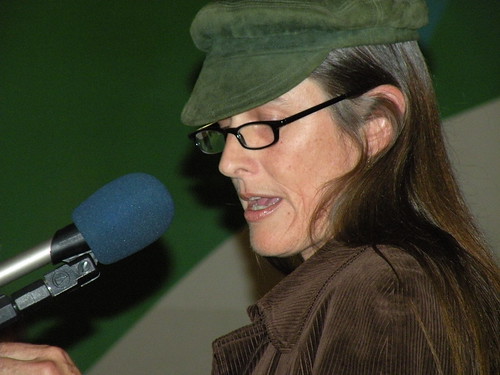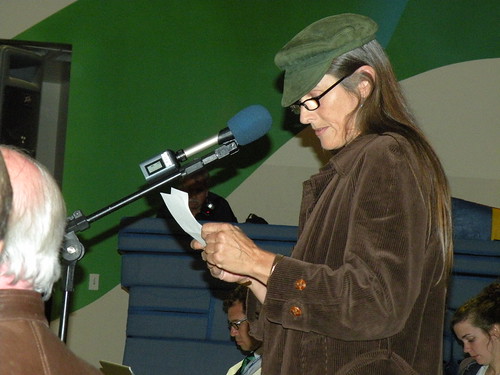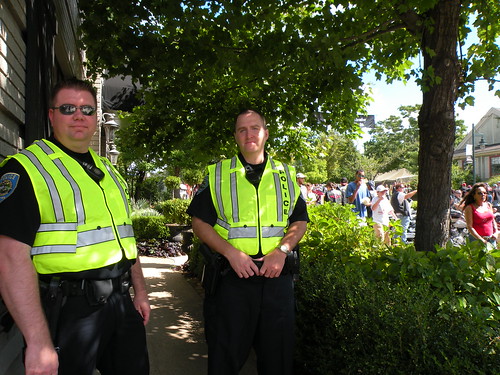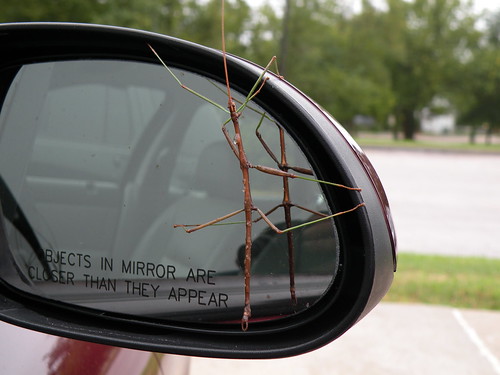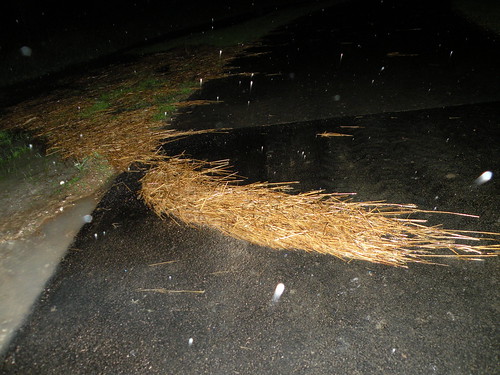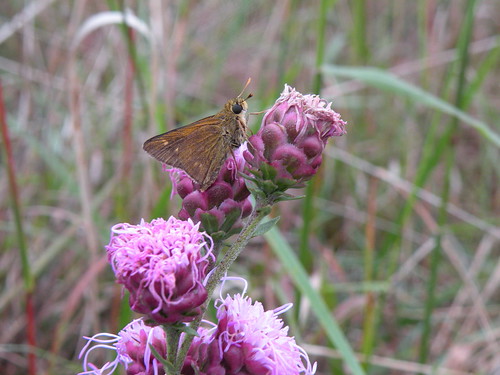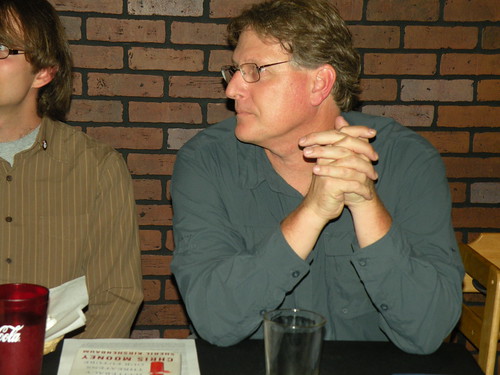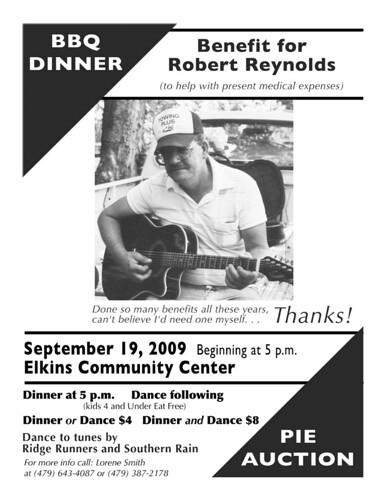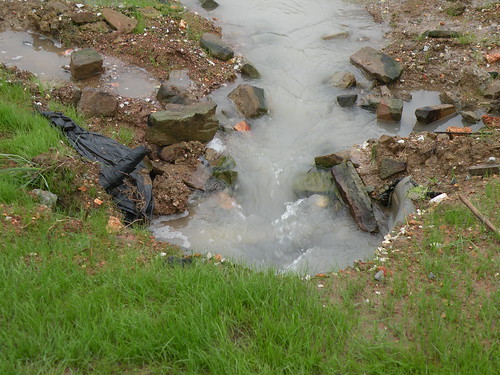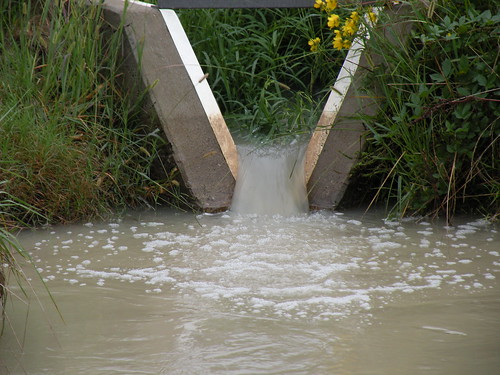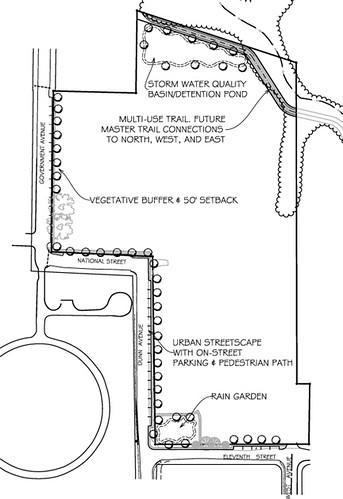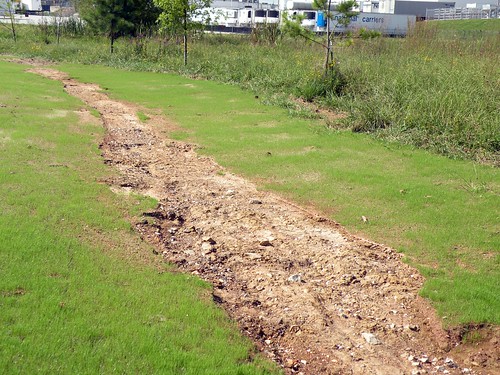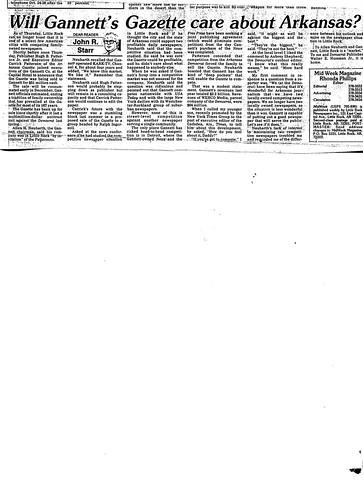Interesting what one can hear on Government Channel. A wonderful, dedicated Fayetteville volunteer committee member and city leader said in a meeting that he had visited the Hill Place project and found it a great improvement from what he had seen before. He even praised the landscaping! The landscaping is one of the horrible jokes of that project. In addition to chopping off the roots of some of the few protected mature trees in the project's dedicated parkland to provide a space for irrigation pipes for some of the inappropriately chosen saplings planted along the streets, the landscapers have repeatedly added mucky, silty dirt to the surface of the trail edges and the parkland. Had the dedicated Fayetteville volunteer committee member done his due diligence and visited our blogs frequently or reviewed the oldest pre-Aspen Ridge photos online he likely would have pointed out some of the stupid mistakes and just plain arrogant disregard of what the Town Branch neighbors asked for in early meetings with those planning Aspen Ridge and later Hill Place.
Obviously, he hasn't seen our photos of the failed raingardens with mulch repeatedly running off into the storm drains to add debris and silt to the Town Branch of the West Fork of the White River. Obviously, he hasn't noticed our photos of the nonnative landscape plants and the red dirt and other nonnative dirt that several times washed off the landscaped areas and the new TRAIL area onto World Peace Wetland Prairie and Pinnacle Prairie.
The Hill Place project is what the neighbors predicted, not what the developers promised. The railroad slope on the west has repeatedly washed downhill and some buildings have had their carpets replaced because of flooding caused by landscaped areas built uphil from the groundfloor apartments.
And the downstream neighbors face continued increased flooding because of the paving and roofing of all those 30 acres of critical groundwater-recharge area.
Wednesday, September 30, 2009
Tuesday, September 29, 2009
Monday, September 28, 2009
Sunday, September 27, 2009
Saturday, September 26, 2009
Local faces rare in crowd of thousands at Bikes, Blues and Barbecue 2009 in Fayetteville, Arkansas
VFW representative Robert Wise of Winslow raises money to help buy sale-barn land to enlarge Fayetteville National Cemetery at BB&BBQ on September 25, 2009
Mike Odom asks for donations to help him qualify to ride in Tour de Cure fund-raising ride
A message from Michael Odom michael.odom374@gmail.com.
I recently accepted the challenge of cycling in the American Diabetes Association's Tour de Cure fund-raising event. The Tour de Cure is a series of cycling events held in over 80 cities nationwide. The Tour is a ride, not a race; it features different route lengths from a family-friendly 10-mile course to a challenging 100-mile journey. I have joined thousands of others to pedal in support of the Association's mission: to prevent and cure diabetes and to improve the lives of all people affected by diabetes.
I am asking you to help by supporting my fund-raising efforts with a donation. Your tax-deductible gift will make a difference in the lives of more than 23 million Americans who suffer from diabetes and over 57 million people in the United States with pre-diabetes.
It's fast and easy to support this great cause - you can make your donation online by selecting the "Click to Support Me" link below.
Any amount, great or small, helps in the fight against this deadly disease. I greatly appreciate your support and will keep you posted on my progress. If you want to do even more to help, please consider joining me in this great event. Our efforts will help set the pace in the fight against diabetes.
More information on the American Diabetes Association, its programs and diabetes in general can be found at the Association's Web site: www.diabetes.org
For more information on Tour de Cure, please visit www.diabetes.org/tour.
Click here to visit my personal page.
If the text above does not appear as a clickable link, you can visit the web address:
http://main.diabetes.org/site/TR/TourdeCure/TDC429418030?px=5235787&pg=personal&fr_id=5617&et=t1NUPx3jQAaAmLuyt6Elfw..&s_tafId=219348
I recently accepted the challenge of cycling in the American Diabetes Association's Tour de Cure fund-raising event. The Tour de Cure is a series of cycling events held in over 80 cities nationwide. The Tour is a ride, not a race; it features different route lengths from a family-friendly 10-mile course to a challenging 100-mile journey. I have joined thousands of others to pedal in support of the Association's mission: to prevent and cure diabetes and to improve the lives of all people affected by diabetes.
I am asking you to help by supporting my fund-raising efforts with a donation. Your tax-deductible gift will make a difference in the lives of more than 23 million Americans who suffer from diabetes and over 57 million people in the United States with pre-diabetes.
It's fast and easy to support this great cause - you can make your donation online by selecting the "Click to Support Me" link below.
Any amount, great or small, helps in the fight against this deadly disease. I greatly appreciate your support and will keep you posted on my progress. If you want to do even more to help, please consider joining me in this great event. Our efforts will help set the pace in the fight against diabetes.
More information on the American Diabetes Association, its programs and diabetes in general can be found at the Association's Web site: www.diabetes.org
For more information on Tour de Cure, please visit www.diabetes.org/tour.
Click here to visit my personal page.
If the text above does not appear as a clickable link, you can visit the web address:
http://main.diabetes.org/site/TR/TourdeCure/TDC429418030?px=5235787&pg=personal&fr_id=5617&et=t1NUPx3jQAaAmLuyt6Elfw..&s_tafId=219348
Friday, September 25, 2009
Stick insect on iron weed westside of World Peace Wetland Prairie near new city trail through Pinnacle Prairie on August 31, 2009
Thursday, September 24, 2009
Leaf-footed bugs among my favorite weird species
Wednesday, September 23, 2009
Nancy Allen is online and on CAT 18 of Cox Cable talking with Richard Drake about "To Kill a Mockingbird" right now
Tuesday, September 22, 2009
Active effort to foster use of native plants on sides of nation's roads goes back three-quarters of a century
Please click on headline above to visit federal highway administration site for more information.
Roadside Use of Native Plants
History of Roadside Development
The history of roadside development and management has occurred on different timelines in different States. However, most State Departments of Transportation share this common history. The Surface Transportation and Uniform Relocation Assistance Act formalized a native wildflower requirement. On that law and others, the case for use of native plants was built.
1932 - A midwest group known as Friends of the Native Landscape (Jens Jensen) reported an approach to the Illinois Department of Transportation for Roadside Planting and Development. Many States were pursuing this approach due to the economic pressures of the times.
1936 - Jesse M. Bennett wrote Roadsides, the Front Yard of the Nation. Although the book's title stuck, Bennett's words did not: "What is really desired, however, is attractive and useful roadsides which can be obtained by preserving or creating a natural or an approach to a natural condition in keeping with the adjacent or surrounding country. And the significant thing about this is outright economy in road maintenance." States like Texas thought this to be true.
1965 - The Highway Beautification Act, under Ladybird Johnson's influence, encouraged the removal of billboards, screening of junkyards, and landscaping of roadsides.
1969 - The NEPA (National Environmental Policy Act) established the notion of avoidance and minimization of disturbance. This law encouraged environmentally sensitive solutions.
1987 - STURAA (Surface Transportation and Uniform Relocation Assistance Act) is the act that includes the requirement to plant native wildflowers with of 1 % of a highway project's landscape budget when federal funds are used. By 1987 some States were already planting more than that minimum. By 1994 only 38 States had program level support for native wildflowers.
1991 - ISTEA (Intermodal Surface Transportation Efficiency Act) provided funding for enhancements. One of the ten categories of enhancements was landscaping. All ISTEA projects were subject to the STURAA requirement of native wildflower use.
1994 -The Executive Memorandum (E.M.) On environmentally and economially beneficial landscaping was signed by President Clinton. The E.M. recommended the use of regional native plants, less fertilizers, less pesticides, less irrigation on federal grounds, lands, and federally funded landscape projects ....as in highway construction projects.
1999 - An Executive Order (E.O) on invasive plants was signed by President Clinton. The E.O. ordered increased communication and cooperation of all agencies through a National Invasive Species Council. All agencies focused on prevention and control of invasive plant species, as well as followed-up with restoration of native plants as directed.
Roadside Use of Native Plants
History of Roadside Development
The history of roadside development and management has occurred on different timelines in different States. However, most State Departments of Transportation share this common history. The Surface Transportation and Uniform Relocation Assistance Act formalized a native wildflower requirement. On that law and others, the case for use of native plants was built.
1932 - A midwest group known as Friends of the Native Landscape (Jens Jensen) reported an approach to the Illinois Department of Transportation for Roadside Planting and Development. Many States were pursuing this approach due to the economic pressures of the times.
1936 - Jesse M. Bennett wrote Roadsides, the Front Yard of the Nation. Although the book's title stuck, Bennett's words did not: "What is really desired, however, is attractive and useful roadsides which can be obtained by preserving or creating a natural or an approach to a natural condition in keeping with the adjacent or surrounding country. And the significant thing about this is outright economy in road maintenance." States like Texas thought this to be true.
1965 - The Highway Beautification Act, under Ladybird Johnson's influence, encouraged the removal of billboards, screening of junkyards, and landscaping of roadsides.
1969 - The NEPA (National Environmental Policy Act) established the notion of avoidance and minimization of disturbance. This law encouraged environmentally sensitive solutions.
1987 - STURAA (Surface Transportation and Uniform Relocation Assistance Act) is the act that includes the requirement to plant native wildflowers with of 1 % of a highway project's landscape budget when federal funds are used. By 1987 some States were already planting more than that minimum. By 1994 only 38 States had program level support for native wildflowers.
1991 - ISTEA (Intermodal Surface Transportation Efficiency Act) provided funding for enhancements. One of the ten categories of enhancements was landscaping. All ISTEA projects were subject to the STURAA requirement of native wildflower use.
1994 -The Executive Memorandum (E.M.) On environmentally and economially beneficial landscaping was signed by President Clinton. The E.M. recommended the use of regional native plants, less fertilizers, less pesticides, less irrigation on federal grounds, lands, and federally funded landscape projects ....as in highway construction projects.
1999 - An Executive Order (E.O) on invasive plants was signed by President Clinton. The E.O. ordered increased communication and cooperation of all agencies through a National Invasive Species Council. All agencies focused on prevention and control of invasive plant species, as well as followed-up with restoration of native plants as directed.
David Whitaker resigns as city attorney
The Northwest Arkansas Times reports:
Whitaker resigns post in city attorney’s office
By Robin Mero
Tuesday, September 22, 2009
FAYETTEVILLE — Fayetteville Assistant City Attorney David J. Whitaker resigned his position effective Friday.
Whitaker said he can’t yet speak about his next endeavor but it involves a new opportunity in public service. He will say more in early October and plans to remain in Fayetteville.
Whitaker is currently Washington County chairman of the Democratic Central Committee and state chairman of the Democratic Veterans Caucus.
He’s been with the city more than eight years and said the job has been incredible.
In a letter submitted last week to City Attorney Kit Williams, Whitaker said he moves on with “no small measure of sadness or regret. ... Iwant to thank you again for the opportunity to serve the citizens of the finest city in the world, and for the chance to grow both personally and professionally these past eight and a half years.”
A reception for Whitaker is planned at 3 p.m. Friday at City Hall.
Whitaker lived in Georgia andVirginia before coming to Northwest Arkansas in 1996 for law school. He was age 35 then and had served six years with the U.S. Air Force.
Whitaker joined the city immediately after Williams took his elected office, as did their assistant, Judy Housley.
Williams said Whitaker was a good choice, in part for his life experience.
”He brought a great wealth of experience,knowledge of how people should be treated and common sense to the job,” Williams said. “I’m sorry to see him and his steady hand leave.”
Before working for the city, he was director of the Washington County Domestic Violence Task Force, under a U.S. Department of Justice grant through the Washington County Prosecutor’s Office. That grant ended in 2000, and Whitaker for a short time took private cases and appointed work with the state Public Defender Commission.
An advertisement forthe city’s assistant attorney position was published over the past weekend. Williams said he’s looking for at least one year’s experience, along with an Arkansas law license, and the salary begins at $61,000.
The assistant city attorney represents the board of adjustments, reviews agenda requests and contracts, and writes resolutions. The deputy also responds to research requests on wide-ranging topics and handles bankruptcy claims and releases for damage when the city pays compensation.
News, Pages 1, 7 on 09/22/2009
Whitaker resigns post in city attorney’s office
By Robin Mero
Tuesday, September 22, 2009
FAYETTEVILLE — Fayetteville Assistant City Attorney David J. Whitaker resigned his position effective Friday.
Whitaker said he can’t yet speak about his next endeavor but it involves a new opportunity in public service. He will say more in early October and plans to remain in Fayetteville.
Whitaker is currently Washington County chairman of the Democratic Central Committee and state chairman of the Democratic Veterans Caucus.
He’s been with the city more than eight years and said the job has been incredible.
In a letter submitted last week to City Attorney Kit Williams, Whitaker said he moves on with “no small measure of sadness or regret. ... Iwant to thank you again for the opportunity to serve the citizens of the finest city in the world, and for the chance to grow both personally and professionally these past eight and a half years.”
A reception for Whitaker is planned at 3 p.m. Friday at City Hall.
Whitaker lived in Georgia andVirginia before coming to Northwest Arkansas in 1996 for law school. He was age 35 then and had served six years with the U.S. Air Force.
Whitaker joined the city immediately after Williams took his elected office, as did their assistant, Judy Housley.
Williams said Whitaker was a good choice, in part for his life experience.
”He brought a great wealth of experience,knowledge of how people should be treated and common sense to the job,” Williams said. “I’m sorry to see him and his steady hand leave.”
Before working for the city, he was director of the Washington County Domestic Violence Task Force, under a U.S. Department of Justice grant through the Washington County Prosecutor’s Office. That grant ended in 2000, and Whitaker for a short time took private cases and appointed work with the state Public Defender Commission.
An advertisement forthe city’s assistant attorney position was published over the past weekend. Williams said he’s looking for at least one year’s experience, along with an Arkansas law license, and the salary begins at $61,000.
The assistant city attorney represents the board of adjustments, reviews agenda requests and contracts, and writes resolutions. The deputy also responds to research requests on wide-ranging topics and handles bankruptcy claims and releases for damage when the city pays compensation.
News, Pages 1, 7 on 09/22/2009
More photos from last night's near flash-flood situation in Fayettevile on Flickr site
Monday, September 21, 2009
Winfest among the best local small-town gatherings
Please click on headline to read Robin Mero's story in the Northwest Arkansas Times.
Sunday, September 20, 2009
September 20, 2009, wildflowers slowly fading but not all gone to seed
Friday, September 18, 2009
OMNI Climate-breakdown book forum a success at 6 p.m. today at Nightbird bookstore on Dickson Street
OMNI Climate-breakdown book forum at 6 p.m. today at Nightbird bookstore on Dickson Street
CLIMATE BREAKDOWN BOOK FORUM
Sponsored by OMNI Center for Peace, Justice, and ECOLOGY and the OMNI Carbon Caps Task Force
SEPTEMBER 18, FRIDAY, 6PM, NIGHTBIRD BOOKS.
PANELISTS
Ryan Bancroft: Chris Mooney, Unscientific America
Jonathan Gibbs: Mark Lynas, Six Degrees
Steve Boss: David Archer, The Long Thaw
Joanna Pollock: James Speth. The Bridge at the Edge of the World: Capitalism, the Environment, and Crossing from Crisis to Sustainability.
Carl Barnwell has degrees in Mathematics and Computer Systems Engineering, worked as a programmer, activist, and served on the Steering Committee of OMNI.
Ryan Bancroft: I attended Truman State University and graduated with a Bachelor of Arts in English. I enjoy using the critical skills that college refined to explore various texts on environmental concerns, with a focus on alternative energy and food-production. Now, I work with the OMNI Center as an Americorps*VISTA volunteer who seeks to expand OMNI's environmental efforts. Current projects include acting as the Carbon Caps Task Force facilitator, building connections with local and national organizations in Arkansas, and developing green-energy projects and collaborations that aid low-income populations in Fayetteville, NW Arkansas, and hopefully throughout the state. If any of this sound appealing, do not hesitate to contact me anytime!
Jonathan Gibbs: I took an apprenticeship in carpentry and eventually spent a year building organic small farms in northern California. I've returned to become acquainted with community organization as an Americorps worker and hope to receive a Peace Corps station in the Philippines, my mother's homeland, and pursue a professional degree after.
Steve Bost has a doctorate in Marine Sciences from the U. of North Carolina at Chapel Hill and have been on the faculty in the Department of Geosciences at UA since 1996. Since 2002, I have been director of the interdisciplinary doctoral degree program in Environmental Dynamics at UA. Environmental Dynamics focuses on investigations of human interactions in the environment at all spatial and temporal scales. I am also involved in a broad array of UA sustainability initiatives, including being a member of a team developing a Professional Science Masters' degree in Sustainability Analysis, which we hope to implement in the near future.
Joanna Pollock has a Bachelor's of Science in Nutrition from Ouachita Baptist University, a background in public administration, public health nutrition and long term care consultation. This background has helped to inform her of the interconnectedness and sheer brevity of life. She is currently studying Counseling at the University of Arkansas and has a special interest in Eco-Psychology. She is a Climate Precinct Captain with 1sky working to promote national climate change legislation. She also volunteers with Clean Air Arkansas, is a Carbon Caps Task Force Member and worked as Communications Coordinator for Repower Arkansas. These organizations are all working to educate the Arkansas public about Climate Change, as well as, encourage civic action to reduce carbon emissions through legislation, personal change and other peaceful means.
DESCRIPTION
This OMNI Book Forum discusses the latest science-based scholarship explaining how the climate is collapsing with accelerating speed.
VOLUNTEERS
Coordinator: Dick Bennett, 442-4600
Moderator: Carl Barnwell, introductions and brief account of James Lovelock, The Vanishing Face of Gaia A Final Warning
Greeter: Leonard Schulte
Publicity Campaign (using Dick’s Guide):
Photos: Aubrey Shepherd
Video: Jeffrey Sidensticker
Flyer and Poster:
Distribution of Flyer and Poster:
News Release (traditional): Dick
News Release (electronic): Jonathan Biggs
Sponsored by OMNI Center for Peace, Justice, and ECOLOGY and the OMNI Carbon Caps Task Force
SEPTEMBER 18, FRIDAY, 6PM, NIGHTBIRD BOOKS.
PANELISTS
Ryan Bancroft: Chris Mooney, Unscientific America
Jonathan Gibbs: Mark Lynas, Six Degrees
Steve Boss: David Archer, The Long Thaw
Joanna Pollock: James Speth. The Bridge at the Edge of the World: Capitalism, the Environment, and Crossing from Crisis to Sustainability.
Carl Barnwell has degrees in Mathematics and Computer Systems Engineering, worked as a programmer, activist, and served on the Steering Committee of OMNI.
Ryan Bancroft: I attended Truman State University and graduated with a Bachelor of Arts in English. I enjoy using the critical skills that college refined to explore various texts on environmental concerns, with a focus on alternative energy and food-production. Now, I work with the OMNI Center as an Americorps*VISTA volunteer who seeks to expand OMNI's environmental efforts. Current projects include acting as the Carbon Caps Task Force facilitator, building connections with local and national organizations in Arkansas, and developing green-energy projects and collaborations that aid low-income populations in Fayetteville, NW Arkansas, and hopefully throughout the state. If any of this sound appealing, do not hesitate to contact me anytime!
Jonathan Gibbs: I took an apprenticeship in carpentry and eventually spent a year building organic small farms in northern California. I've returned to become acquainted with community organization as an Americorps worker and hope to receive a Peace Corps station in the Philippines, my mother's homeland, and pursue a professional degree after.
Steve Bost has a doctorate in Marine Sciences from the U. of North Carolina at Chapel Hill and have been on the faculty in the Department of Geosciences at UA since 1996. Since 2002, I have been director of the interdisciplinary doctoral degree program in Environmental Dynamics at UA. Environmental Dynamics focuses on investigations of human interactions in the environment at all spatial and temporal scales. I am also involved in a broad array of UA sustainability initiatives, including being a member of a team developing a Professional Science Masters' degree in Sustainability Analysis, which we hope to implement in the near future.
Joanna Pollock has a Bachelor's of Science in Nutrition from Ouachita Baptist University, a background in public administration, public health nutrition and long term care consultation. This background has helped to inform her of the interconnectedness and sheer brevity of life. She is currently studying Counseling at the University of Arkansas and has a special interest in Eco-Psychology. She is a Climate Precinct Captain with 1sky working to promote national climate change legislation. She also volunteers with Clean Air Arkansas, is a Carbon Caps Task Force Member and worked as Communications Coordinator for Repower Arkansas. These organizations are all working to educate the Arkansas public about Climate Change, as well as, encourage civic action to reduce carbon emissions through legislation, personal change and other peaceful means.
DESCRIPTION
This OMNI Book Forum discusses the latest science-based scholarship explaining how the climate is collapsing with accelerating speed.
VOLUNTEERS
Coordinator: Dick Bennett, 442-4600
Moderator: Carl Barnwell, introductions and brief account of James Lovelock, The Vanishing Face of Gaia A Final Warning
Greeter: Leonard Schulte
Publicity Campaign (using Dick’s Guide):
Photos: Aubrey Shepherd
Video: Jeffrey Sidensticker
Flyer and Poster:
Distribution of Flyer and Poster:
News Release (traditional): Dick
News Release (electronic): Jonathan Biggs
Elkins the place to be at 5 p.m. Saturday! Benefit for Robert Reynolds
Saturday night's benefit in Elkins is advertising an "old-fashioned pie auction," according to one of the organizers. That means that everyone who attends is invited to bring something to auction off. It does not have to be a pie!
It can be literally anything legal that one owns and wants to donate to help raise money for a fine musician's medical bills. Robert Reynolds is soon to begin another round of chemotherapy or radiation therapy, and like millions of Americans without adequate healthcare insurance, cannot pay all the bills that are accruing.
Please help. The cost of the dinner and dance is $8 or $4 for only dinner or only the bluegrass/country concert and dance. And just meeting some wonderful people mostly from our area will be a wonderful experience. So bring an item to auction and some youngsters to enjoy this special opportunity and savor a sample of Ozark life at its best.
Scroll down a couple of spots to see the flyer on the event.
It can be literally anything legal that one owns and wants to donate to help raise money for a fine musician's medical bills. Robert Reynolds is soon to begin another round of chemotherapy or radiation therapy, and like millions of Americans without adequate healthcare insurance, cannot pay all the bills that are accruing.
Please help. The cost of the dinner and dance is $8 or $4 for only dinner or only the bluegrass/country concert and dance. And just meeting some wonderful people mostly from our area will be a wonderful experience. So bring an item to auction and some youngsters to enjoy this special opportunity and savor a sample of Ozark life at its best.
Scroll down a couple of spots to see the flyer on the event.
Thursday, September 17, 2009
Wet summer creates banner year for flowers in Fayetteville, Arkansas
Wednesday, September 16, 2009
Tuesday, September 15, 2009
Failure of millage for humongous high-school project has to thrill several liberal politicians who spoke in favor of it but knew it was wrong
The old and poor prevailed, for a change. Quashing the millage increase wasn't a teabagger victory but a peace and justice old people's victory. Democratic candidates for next year's elections need to pay attention and realize who will elect them if they are to win.
A Town Branch saga ends: Sale-barn rezoning proposal to allow multistory apartments to be built adjacent to Fayetteville National Cemetery denied
Another saga begins:
What's next? Probably another buyer trying to acquire the Washington County Livestock Auction property before the veterans' groups can raise the money.
So the next certain effort the Town Branch Neighborhood must support is the big fund-raising effort to help the veterans' cemetery acquire funding for the purchase.
The first step is to man at booth during the upcoming October Bikes, Blues and Barbecue gathering in Fayetteville, while gathering prizes and money to support the Nov. 7 Veterans' 5-K run.
Quashing the rezoning was the important battle to win. A lot of people will donate to secure the sale-barn from future threats of inappropriate development.
What's next? Probably another buyer trying to acquire the Washington County Livestock Auction property before the veterans' groups can raise the money.
So the next certain effort the Town Branch Neighborhood must support is the big fund-raising effort to help the veterans' cemetery acquire funding for the purchase.
The first step is to man at booth during the upcoming October Bikes, Blues and Barbecue gathering in Fayetteville, while gathering prizes and money to support the Nov. 7 Veterans' 5-K run.
Quashing the rezoning was the important battle to win. A lot of people will donate to secure the sale-barn from future threats of inappropriate development.
Developers hold bill of assurance to last minute to avoid news coverage
BILL OF ASSURANCE
FOR THE CITY OF FAYETTEVILLE, ARKANSAS
In order to attempt to obtain approval of a request for a zoning reclassification,
the owner, developer, or buyer of this property, (hereinafter “Petitioner”) Campus
Crest Development, hereby voluntarily offers this Bill of Assurance and enters into this
binding agreement and contract with the City of Fayetteville, Arkansas.
The Petitioner expressly grants to the City of Fayetteville the right to enforce
any and all of the terms of this Bill of Assurance in the Circuit Court of Washington
County and agrees that if Petitioner or Petitioner’s heirs, assigns, or successors violate
any term of this Bill of Assurance, substantial irreparable damage justifying
injunctive relief has been done to the citizens and City of Fayetteville, Arkansas. The
Petitioner acknowledges that the Fayetteville Planning Commission and the Fayetteville
City Council will reasonable rely upon all of the terms and conditions within this Bill of
Assurance in considering whether to approve Petitioner’s rezoning request.
Petitioner hereby voluntarily offers assurances that Petitioner and Petitioner’s
property shall be restricted as follows IF Petitioner’s rezoning is approved by the
Fayetteville City Council.
1. The use of Petitioner’s property shall be limited to only those permitted uses
expressly provided or referenced within the Downtown General zoning ordinance .
2. Other restrictions including number and type of structures upon the property
are limited to:
a) A three-story height restriction on all buildings within fifty (50)
feet of the property line along Government Avenue;
b) There shall be a fifty (50) feet building set back along all property
adjacent to Government Avenue;
c) There shall be a density limit of twenty (20) residential apartment
units per acre on all property subject to the overall development
prior to any land dedication as required by the City of
Fayetteville.
3. Specific activities will not be allowed upon petitioner’s property include all
uses not expressly permitted by Downtown General zoning classification.
FOR THE CITY OF FAYETTEVILLE, ARKANSAS
In order to attempt to obtain approval of a request for a zoning reclassification,
the owner, developer, or buyer of this property, (hereinafter “Petitioner”) Campus
Crest Development, hereby voluntarily offers this Bill of Assurance and enters into this
binding agreement and contract with the City of Fayetteville, Arkansas.
The Petitioner expressly grants to the City of Fayetteville the right to enforce
any and all of the terms of this Bill of Assurance in the Circuit Court of Washington
County and agrees that if Petitioner or Petitioner’s heirs, assigns, or successors violate
any term of this Bill of Assurance, substantial irreparable damage justifying
injunctive relief has been done to the citizens and City of Fayetteville, Arkansas. The
Petitioner acknowledges that the Fayetteville Planning Commission and the Fayetteville
City Council will reasonable rely upon all of the terms and conditions within this Bill of
Assurance in considering whether to approve Petitioner’s rezoning request.
Petitioner hereby voluntarily offers assurances that Petitioner and Petitioner’s
property shall be restricted as follows IF Petitioner’s rezoning is approved by the
Fayetteville City Council.
1. The use of Petitioner’s property shall be limited to only those permitted uses
expressly provided or referenced within the Downtown General zoning ordinance .
2. Other restrictions including number and type of structures upon the property
are limited to:
a) A three-story height restriction on all buildings within fifty (50)
feet of the property line along Government Avenue;
b) There shall be a fifty (50) feet building set back along all property
adjacent to Government Avenue;
c) There shall be a density limit of twenty (20) residential apartment
units per acre on all property subject to the overall development
prior to any land dedication as required by the City of
Fayetteville.
3. Specific activities will not be allowed upon petitioner’s property include all
uses not expressly permitted by Downtown General zoning classification.
Monday, September 14, 2009
Bonnie Cook urges all to read the papers, attend Senior Democrats' meeting and vote!
IMPORTANT NEWS--REALLY IMPORTANT!!!!!!!!!!!!!
From: Bonnie Cook (bonniebcook@sbcglobal.net)
Sent: Mon 9/14/09 8:09 AM
To: Bonnie Cook (bonniebcook@sbcglobal.net)
Hi,
ONE MORE TIME!!!!!!!!!!!!!! Senior Democrats will meet (tomorrow) Tuesday, September 15th at 11:30 at Western Sizzlin in Springdale. Teresa Marks (ADEQ) will be guest speaker. PLEASE make a special effort to get in touch with people. I know I keep doing this. However, there has never been a time with more going on. First there's the fair, and the election and I'm sure lots of other things. Many people who would come to Senior Democrats Meetings will be working in those events. This makes me know we need to make a little extra effort. We are fortunate to have an outstanding speaker who will provide information that is important to all of us.
I had a note from David Whitaker this morning. Democratic Central Committee will meet next Monday night at 6:30 NOT this Monday.
The Newspapers have done an outstanding job reporting events related to the Fayetteville millage vote. They've also put a number of other important events in there. If you are looking for "What's Happening" grab a newspaper. It's THERE.
Rember Alejandro Aviles (Alex to many of us ) who left us to go to the Clinton School in Little Rock. Alejandro became the youngest person to lead the Arkansas Lulac Chapter. We're proud.
Take Care. Please Vote. I hope to see you tomorrow.
From: Bonnie Cook (bonniebcook@sbcglobal.net)
Sent: Mon 9/14/09 8:09 AM
To: Bonnie Cook (bonniebcook@sbcglobal.net)
Hi,
ONE MORE TIME!!!!!!!!!!!!!! Senior Democrats will meet (tomorrow) Tuesday, September 15th at 11:30 at Western Sizzlin in Springdale. Teresa Marks (ADEQ) will be guest speaker. PLEASE make a special effort to get in touch with people. I know I keep doing this. However, there has never been a time with more going on. First there's the fair, and the election and I'm sure lots of other things. Many people who would come to Senior Democrats Meetings will be working in those events. This makes me know we need to make a little extra effort. We are fortunate to have an outstanding speaker who will provide information that is important to all of us.
I had a note from David Whitaker this morning. Democratic Central Committee will meet next Monday night at 6:30 NOT this Monday.
The Newspapers have done an outstanding job reporting events related to the Fayetteville millage vote. They've also put a number of other important events in there. If you are looking for "What's Happening" grab a newspaper. It's THERE.
Rember Alejandro Aviles (Alex to many of us ) who left us to go to the Clinton School in Little Rock. Alejandro became the youngest person to lead the Arkansas Lulac Chapter. We're proud.
Take Care. Please Vote. I hope to see you tomorrow.
RNCIC news release strangely timed
I think you may be missing the point of the huge amount of information I provided this weekend on this site and others.
The RNCIC announcement was issued by officers of the RNCIC to the Springdale office of the Morning News. They live in Springdale and have never attended a meeting of the Town Branch Neighborhood Association.
Had they chosen to ask the members of the RNCIC to support their comments, which they decided to make after having a private meeting with a representatives of the company seeking to rezone the National Cemetery to allow it to build 500 bedrooms in three-story buildings next to the National Cemetery, they would have waited until 10 a.m. Saturday and brought up the text for consideration during the monthly meeting.
They did not attend the meeting. The vice president chaired the meeting and someone else had to do the secretary's work during the meeting. He said something about the group being done with the sale-barn issue. He appeared reluctant to allow discussion and managed the meeting to get it over fast.
I stated clearly that the neighbors would continue to try to protect the cemetery and the neighborhood from the risk of having multistory buildings with 500 bedrooms adjacent to the National Shrine.
The 7 or 8 people who attended may or may not have voted to send out the news release.
The effort to buy and destroy the existing single-family homes on Hill Avenue and Government Avenue was their second choice more than a decade ago when there was no indication that the Washington County Livestock Auction property would come up for sale.
We appreciate what the RNCIC has done to enlarge the cemetery in the past. But the thousands of members of veterans' organizations and others who have contributed to the effort must be considered also.
My personal conversations with hundreds of them make me confident that the majority would not support the RNCIC news release.
I hope the RNCIC will gain membership, especially members who are younger and more energetic than most of us at Saturday's meeting and will remember what was required to serve and get the right thing done.
New members who believe that the effort to raise money to buy the sale-barn property will have to make it happen. Some of the longtime members express total disappointment with public officials who haven't supported their efforts in the past, which means they won't even attempt to push for support now.
However, the threat of construction next within 100 feet of the graves in the cemetery has created incredible support for expansion of the cemetery.
For this cemetery to be wrapped in huge apartment complexes would be abominable.
When the City Council votes down the rezoning on Tuesday night, then the fund-raising effort must begin in earnest.
After the quick closing of the meeting Saturday, one person pointed out to those of us lingering over the coffee pot at the American Legion building that only $10 each from the veterans in the four-county area eligible to be buried in the Fayetteville National Cemetery would bring in the first million dollars.
The RNCIC is a nonprofit organization founded years ago to gather funding for "improvement" of the national cemetery. Putting out a statement basically allowing the public to get the idea that incompatible development next to the cemetery might be OK isn't part of its mission statement.
Compromising with the enemy just when the public has actually stepped up to support them makes no sense.
The RNCIC was trying to buy the land across on Hill Avenue before the plan to build Aspen Ridge was proposed.
The RNCIC announcement was issued by officers of the RNCIC to the Springdale office of the Morning News. They live in Springdale and have never attended a meeting of the Town Branch Neighborhood Association.
Had they chosen to ask the members of the RNCIC to support their comments, which they decided to make after having a private meeting with a representatives of the company seeking to rezone the National Cemetery to allow it to build 500 bedrooms in three-story buildings next to the National Cemetery, they would have waited until 10 a.m. Saturday and brought up the text for consideration during the monthly meeting.
They did not attend the meeting. The vice president chaired the meeting and someone else had to do the secretary's work during the meeting. He said something about the group being done with the sale-barn issue. He appeared reluctant to allow discussion and managed the meeting to get it over fast.
I stated clearly that the neighbors would continue to try to protect the cemetery and the neighborhood from the risk of having multistory buildings with 500 bedrooms adjacent to the National Shrine.
The 7 or 8 people who attended may or may not have voted to send out the news release.
The effort to buy and destroy the existing single-family homes on Hill Avenue and Government Avenue was their second choice more than a decade ago when there was no indication that the Washington County Livestock Auction property would come up for sale.
We appreciate what the RNCIC has done to enlarge the cemetery in the past. But the thousands of members of veterans' organizations and others who have contributed to the effort must be considered also.
My personal conversations with hundreds of them make me confident that the majority would not support the RNCIC news release.
I hope the RNCIC will gain membership, especially members who are younger and more energetic than most of us at Saturday's meeting and will remember what was required to serve and get the right thing done.
New members who believe that the effort to raise money to buy the sale-barn property will have to make it happen. Some of the longtime members express total disappointment with public officials who haven't supported their efforts in the past, which means they won't even attempt to push for support now.
However, the threat of construction next within 100 feet of the graves in the cemetery has created incredible support for expansion of the cemetery.
For this cemetery to be wrapped in huge apartment complexes would be abominable.
When the City Council votes down the rezoning on Tuesday night, then the fund-raising effort must begin in earnest.
After the quick closing of the meeting Saturday, one person pointed out to those of us lingering over the coffee pot at the American Legion building that only $10 each from the veterans in the four-county area eligible to be buried in the Fayetteville National Cemetery would bring in the first million dollars.
The RNCIC is a nonprofit organization founded years ago to gather funding for "improvement" of the national cemetery. Putting out a statement basically allowing the public to get the idea that incompatible development next to the cemetery might be OK isn't part of its mission statement.
Compromising with the enemy just when the public has actually stepped up to support them makes no sense.
The RNCIC was trying to buy the land across on Hill Avenue before the plan to build Aspen Ridge was proposed.
Sunday, September 13, 2009
Green Infrastructure presentation from 2-4 p.m. today at Chotkowski Gardens north of Wedington Woods similar to yesterday's
Thanks to Kate Ward and the Northwest Arkansas Times for good article on yesterday's gathering. This is an open meeting for public education and public input.
Natural Heritage Association makes plans for a green future
By Kate Ward
Sunday, September 13, 2009
FAYETTEVILLE — Working farms, agricultural land, streams and forests were among the areas outlined by the Fayetteville Natural Heritage Association’s Green Infrastructure Plan on Saturday.
Barbara Boland, project coordinator, said the project is being funded through a pilot grant program funded by the U.S. Department of Agriculture’s Forest Service. The regional plan encompasses 172 square miles and will be used by local decision makers to guide conservation and growth in Northwest Arkansas.
“This is a long-term approach to regional planning,” she said. “It will provide a tool for the different municipalities in Washington County. It has what the public deems to be areas of preservation as well as areas deemed appropriate for potential growth.”
Last year, the group hosted its first public forum in partnership with the Arkansas Forestry Commission’s Urban Forestry Program and the Beaver Water District in hopes of gaining community support.
...
Washington County Judge Marilyn Edwards said she attended the public input forum to learn about the group’s future plans.
“This is a rural state, and we have to preserve our roots,” she said. “We don’t want to lose our identity. I think this is a good group, and that the direction they’re taking is certainly good for the county.”
Members of the design team have been working to identify networks of natural and working land that supports the biological, cultural and economic vitality of the region.
...
In addition to farms, agricultural land, streams and forests, the group’s preservation areas also include riparian zones, prairie and grassland remnants and parks and trails.
...
The group will hold a second public input meeting from 2-4 p.m. today at the same place, 16142 Pin Oak Road, off Wedington Drive north of the Wedington Woods area.
Chotkowski Gardens 479-587-8920
16142 Pin Oak Rd , Fayetteville, AR 72704
Natural Heritage Association makes plans for a green future
By Kate Ward
Sunday, September 13, 2009
FAYETTEVILLE — Working farms, agricultural land, streams and forests were among the areas outlined by the Fayetteville Natural Heritage Association’s Green Infrastructure Plan on Saturday.
Barbara Boland, project coordinator, said the project is being funded through a pilot grant program funded by the U.S. Department of Agriculture’s Forest Service. The regional plan encompasses 172 square miles and will be used by local decision makers to guide conservation and growth in Northwest Arkansas.
“This is a long-term approach to regional planning,” she said. “It will provide a tool for the different municipalities in Washington County. It has what the public deems to be areas of preservation as well as areas deemed appropriate for potential growth.”
Last year, the group hosted its first public forum in partnership with the Arkansas Forestry Commission’s Urban Forestry Program and the Beaver Water District in hopes of gaining community support.
...
Washington County Judge Marilyn Edwards said she attended the public input forum to learn about the group’s future plans.
“This is a rural state, and we have to preserve our roots,” she said. “We don’t want to lose our identity. I think this is a good group, and that the direction they’re taking is certainly good for the county.”
Members of the design team have been working to identify networks of natural and working land that supports the biological, cultural and economic vitality of the region.
...
In addition to farms, agricultural land, streams and forests, the group’s preservation areas also include riparian zones, prairie and grassland remnants and parks and trails.
...
The group will hold a second public input meeting from 2-4 p.m. today at the same place, 16142 Pin Oak Road, off Wedington Drive north of the Wedington Woods area.
Chotkowski Gardens 479-587-8920
16142 Pin Oak Rd , Fayetteville, AR 72704
Saturday, September 12, 2009
Developer meets with RNCIC president and wife, who then, without vote of RNCIC members, tell media that RNCIC has no interest in sale-barn property
The Morning News story was published Saturday. At the monthly meeting of the RNCIC at 10:30 a.m. Saturday, a copy of it was passed around by the only RNCIC members who appeared to know about it before it hit the press. Notice that the RNCIC release did not say that the group does not OPPOSE the building of multistory buildings across narrow South Dunn Avenue from the cemetery. It just claims that the RNCIC wants to continue its slow process of buying existing small homes on S. Hill Avenue while eliminating them from Fayetteville's limited supply of affordable housing for working people.
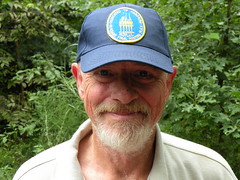
I have long been amazed that two or three members of RNCIC have expressed enthusiasm for buying up those homes and pushing low-income workers' families further from the work places. I do realize that not everyone understands the importance of protecting the Beaver Lake watershed and the groundwater by keeping the rich, dark prairie soil in such karst wetland areas as exist around the northern edge of the sale-barn property and the existing Natonal Cemetery property. Relatively few people understood when we brought up the facts about the seasonal wetland over karst bedrock on the 30-acre Aspen Ridge site. Far too many who recognize the geographic and geological facts of Fayetteville say that wetland is "only an engineering problem." Far too many people simply don't care.
I wasn't surprised by the RNCIC comments to the newspaper or by the opposite comments by other veterans. However, the only reason I expected something of the sort to occur today was that I had talked with a developer's representative the day of the veterans' meeting with Senator Pryor at the National Cemetery and was told of the developers' intention to continue to try to dissuade opponents of the rezoning and the possibility of multistory buildings going in there. I assured the man that I would not be dissuaded from opposition to ANY incompatible project next to the National Cemetery or close to the Oak Cemetery in adjacent to the neighborhood I already loved and appreciated when I decided to buy a home there nearly 15 years ago. I saw the National Cemetery as a very important asset to our neighborhood long before I decided to move into the area.
Some weeks after speaking with the developer's lawyer at the cemetery, three neighborhood representatives who live south of the National Cemetery and the Washington County Livestock Auction property and I met with the same young lawyer at the city library and heard only a discussion of what he considered the merits of the project he was promoting for the North Carolina company he works for without a hint of remorse for what such a project might do to the neighborhood and the cemetery during its construction and after completion. We assured him that we would remain adamantly opposed to rezoning the property in any way that would allow dense development or construction of multistory buildings.
Sometime later, one of my neighbors at that meeting had another occasion to speak with the developer and was told that he would be meeting with the secretary and the president of RNCIC. My neighbor was not invited to attend that meeting. Something about dividing and conquering your opponents, it appears. The husband-wife team of officers and whoever else may have met with the young lawyer/developer's representative did not communicate anything about that meeting to me or some of the other 7 members of RNCIC who attended today's meeting. The president and secretary of RNCIC did not attend Saturday's RNCIC meeting, which was chaired by the vice president of the organization, who asked the group to agree that they were finished with fighting the sale-barn rezoning.
The vice president of RNCIC, Ron Butler, has attended and spoken against the rezoning and incompatible uses at all the Town Branch neighborhood and Ward One meetings and planning commission meetings and a couple of the several City Council meetings where this issue has been discussed. Harold Crivello, treasurer of the RNCIC, and a few other RNCIC members and many veterans who have contributed to RNCIC directly or through their various groups such as DAV, VFW, American Legion, Military Order of the Purple Heart and others spoke nobly and eloquently against the rezoning and dense development next to the National Cemetery at several city meetings.
After Crivello presented his treasurer's report for the month, the vice president reported that a real-estate agent (I think he described the person as a woman and as a REALTOR, had donated $465 to RNCIC and promised to challenge other real-estate companies in Northwest Arkansas to match her donation. Thanks to that person, identified at the meeting only as representing KWCares in Arkansas.
http://www.kwcares.org
The charity's Facebook page says that "KW Cares is a 501(c)(3) public charity created to support Keller Williams Realty associates and their immediate families with hardship as a result of a sudden emergency. Hardship is defined as a difficult circumstance that a person or family cannot handle without outside help.
The charity is the heart of Keller Williams Realty culture in action – finding and serving the higher purpose of business through charitable giving in the market centers and communities where our agents live and work."
KW's donation is the kind of corporate generosity that the National Cemetery fund-raising effort must have to secure the old sale barn property. It will take months for Senator Pryor, Senator Lincoln and Congressman Boozman to have a chance to fulfill their firm promises directly to me and other veterans that they will work together to secure federal funding for the purchase.
Apparently, KW Cares agrees with the overwhelming majority of fellow veterans I have talked with and with all my fellow residents of the Town Branch Neighborhood that the threat of apartments or anything being built on the sale-barn land is an emergency. The most common comment from people I ask for an opinion on the proposed rezoning that would allow apartments there is "I think the veterans ought to get it."
Sorry I wasn't asked to comment as a neighborhood coordinator on the content of the news release provided by a couple or two or three officers of the RNCIC to the newspapers. I guess the reporter forgot that this proposal affects a neighborhood as well as the people who have fought in our nation's many wars while others stayed safely at home and those who served loyally but never faced the enemy in combat.
The Morning News
Local News for Northwest Arkansas
Regional Military Cemetery Association Not Focused On Sale Barn Property
By Skip Descant
THE MORNING NEWS
FAYETTEVILLE — A nonprofit veterans group charged with acquiring property for cemetery expansion has separated itself from the debate to rezone the Washington County Sale and Livestock Barn.
The Regional National Cemetery Improvement Corporation will continue to focus its efforts toward purchasing lots along Hill Avenue for the expansion of the Fayetteville National Cemetery. Purchasing the sale barn site is not on its radar, the corporation said in a statement released this week.
"Considering the estimated multimillion dollar purchase price for the sale barn properties, the RNCIC has determined that purchase of that property by the RNCIC would not be feasible, unless we received several large donations from the private sector, or specific federal government land purchases," according to the statement. "None of these options appear promising at this time."
A need for more cemetery land has been one argument by veterans groups opposed to a rezoning of the sale barn site. Campus Crest, a university housing developer wants to purchase the property as a location for student apartments. The Fayetteville City Council is set to make the rezoning decision at Tuesday's meeting.
Jim Buckner, a retired lieutenant colonel representing the Military Order of the Purple Heart, and one of the leaders behind a proposal to purchase a 3-acre section of the sale barn site, said his group remains committed to the idea of eventually purchasing the property if the rezoning is denied.
"We're both trying to do the same thing, and that's expand the cemetery," Buckner said Friday.
"Our zeal hasn't wavered at all," said Sam Sansom, of West Fork, and president of the Military Officers Association of America. "Our goal is still to acquire that existing 3-acre property."
"There's nothing wrong with coming from two fronts," Sansom added. "I applaud the actions of the RNCIC. They have been the cornerstone of cemetery expansion."
"If the rezoning goes through, the fallback will be to return to the successful efforts of the RNCIC," Sansom said.
Meeting Information
Fayetteville City Council
When: 6 p.m., Tuesday
Where: City Hall, 113 W. Mountain St.

I have long been amazed that two or three members of RNCIC have expressed enthusiasm for buying up those homes and pushing low-income workers' families further from the work places. I do realize that not everyone understands the importance of protecting the Beaver Lake watershed and the groundwater by keeping the rich, dark prairie soil in such karst wetland areas as exist around the northern edge of the sale-barn property and the existing Natonal Cemetery property. Relatively few people understood when we brought up the facts about the seasonal wetland over karst bedrock on the 30-acre Aspen Ridge site. Far too many who recognize the geographic and geological facts of Fayetteville say that wetland is "only an engineering problem." Far too many people simply don't care.
I wasn't surprised by the RNCIC comments to the newspaper or by the opposite comments by other veterans. However, the only reason I expected something of the sort to occur today was that I had talked with a developer's representative the day of the veterans' meeting with Senator Pryor at the National Cemetery and was told of the developers' intention to continue to try to dissuade opponents of the rezoning and the possibility of multistory buildings going in there. I assured the man that I would not be dissuaded from opposition to ANY incompatible project next to the National Cemetery or close to the Oak Cemetery in adjacent to the neighborhood I already loved and appreciated when I decided to buy a home there nearly 15 years ago. I saw the National Cemetery as a very important asset to our neighborhood long before I decided to move into the area.
Some weeks after speaking with the developer's lawyer at the cemetery, three neighborhood representatives who live south of the National Cemetery and the Washington County Livestock Auction property and I met with the same young lawyer at the city library and heard only a discussion of what he considered the merits of the project he was promoting for the North Carolina company he works for without a hint of remorse for what such a project might do to the neighborhood and the cemetery during its construction and after completion. We assured him that we would remain adamantly opposed to rezoning the property in any way that would allow dense development or construction of multistory buildings.
Sometime later, one of my neighbors at that meeting had another occasion to speak with the developer and was told that he would be meeting with the secretary and the president of RNCIC. My neighbor was not invited to attend that meeting. Something about dividing and conquering your opponents, it appears. The husband-wife team of officers and whoever else may have met with the young lawyer/developer's representative did not communicate anything about that meeting to me or some of the other 7 members of RNCIC who attended today's meeting. The president and secretary of RNCIC did not attend Saturday's RNCIC meeting, which was chaired by the vice president of the organization, who asked the group to agree that they were finished with fighting the sale-barn rezoning.
The vice president of RNCIC, Ron Butler, has attended and spoken against the rezoning and incompatible uses at all the Town Branch neighborhood and Ward One meetings and planning commission meetings and a couple of the several City Council meetings where this issue has been discussed. Harold Crivello, treasurer of the RNCIC, and a few other RNCIC members and many veterans who have contributed to RNCIC directly or through their various groups such as DAV, VFW, American Legion, Military Order of the Purple Heart and others spoke nobly and eloquently against the rezoning and dense development next to the National Cemetery at several city meetings.
After Crivello presented his treasurer's report for the month, the vice president reported that a real-estate agent (I think he described the person as a woman and as a REALTOR, had donated $465 to RNCIC and promised to challenge other real-estate companies in Northwest Arkansas to match her donation. Thanks to that person, identified at the meeting only as representing KWCares in Arkansas.
http://www.kwcares.org
The charity's Facebook page says that "KW Cares is a 501(c)(3) public charity created to support Keller Williams Realty associates and their immediate families with hardship as a result of a sudden emergency. Hardship is defined as a difficult circumstance that a person or family cannot handle without outside help.
The charity is the heart of Keller Williams Realty culture in action – finding and serving the higher purpose of business through charitable giving in the market centers and communities where our agents live and work."
KW's donation is the kind of corporate generosity that the National Cemetery fund-raising effort must have to secure the old sale barn property. It will take months for Senator Pryor, Senator Lincoln and Congressman Boozman to have a chance to fulfill their firm promises directly to me and other veterans that they will work together to secure federal funding for the purchase.
Apparently, KW Cares agrees with the overwhelming majority of fellow veterans I have talked with and with all my fellow residents of the Town Branch Neighborhood that the threat of apartments or anything being built on the sale-barn land is an emergency. The most common comment from people I ask for an opinion on the proposed rezoning that would allow apartments there is "I think the veterans ought to get it."
Sorry I wasn't asked to comment as a neighborhood coordinator on the content of the news release provided by a couple or two or three officers of the RNCIC to the newspapers. I guess the reporter forgot that this proposal affects a neighborhood as well as the people who have fought in our nation's many wars while others stayed safely at home and those who served loyally but never faced the enemy in combat.
The Morning News
Local News for Northwest Arkansas
Regional Military Cemetery Association Not Focused On Sale Barn Property
By Skip Descant
THE MORNING NEWS
FAYETTEVILLE — A nonprofit veterans group charged with acquiring property for cemetery expansion has separated itself from the debate to rezone the Washington County Sale and Livestock Barn.
The Regional National Cemetery Improvement Corporation will continue to focus its efforts toward purchasing lots along Hill Avenue for the expansion of the Fayetteville National Cemetery. Purchasing the sale barn site is not on its radar, the corporation said in a statement released this week.
"Considering the estimated multimillion dollar purchase price for the sale barn properties, the RNCIC has determined that purchase of that property by the RNCIC would not be feasible, unless we received several large donations from the private sector, or specific federal government land purchases," according to the statement. "None of these options appear promising at this time."
A need for more cemetery land has been one argument by veterans groups opposed to a rezoning of the sale barn site. Campus Crest, a university housing developer wants to purchase the property as a location for student apartments. The Fayetteville City Council is set to make the rezoning decision at Tuesday's meeting.
Jim Buckner, a retired lieutenant colonel representing the Military Order of the Purple Heart, and one of the leaders behind a proposal to purchase a 3-acre section of the sale barn site, said his group remains committed to the idea of eventually purchasing the property if the rezoning is denied.
"We're both trying to do the same thing, and that's expand the cemetery," Buckner said Friday.
"Our zeal hasn't wavered at all," said Sam Sansom, of West Fork, and president of the Military Officers Association of America. "Our goal is still to acquire that existing 3-acre property."
"There's nothing wrong with coming from two fronts," Sansom added. "I applaud the actions of the RNCIC. They have been the cornerstone of cemetery expansion."
"If the rezoning goes through, the fallback will be to return to the successful efforts of the RNCIC," Sansom said.
Meeting Information
Fayetteville City Council
When: 6 p.m., Tuesday
Where: City Hall, 113 W. Mountain St.
Friday, September 11, 2009
Open house for green-infrastructure study set for Saturday and Sunday afternoon
Open House Planned For Green Infrastructure Study
LAST UPDATED FRIDAY, SEPTEMBER 11, 2009 11:33 AM CDT IN NEWS
By THE MORNING NEWS
EMAIL THIS STORY PRINT THIS STORY COMMENT ON THIS STORY
FAYETTEVILLE — The Fayetteville Natural Heritage Association will hold two open house sessions Saturday and Sunday to receive public response on the Regional Green Infrastructure Plan. The plan hopes to take a stretegic approach to preserve and improve natural spaces and waterways in Washington County.
The plan is part of a $25,000 pilot grant by the U.S. Department of Agriculture Forest Service to study 172 square miles in Washington County and identify areas of conservation as well as put in place practices to preserve farmland, forests and waterways.
"Ultimately, this open house is to gain information about what natural features within western Washington county to include in the Regional Green Infrastructure Plan to be presented to Washington County and local cities in the near future," said Kim Hesse, who is working on the project.
The open house meetings will be Saturday and Sunday from 2 p.m. to 4 p.m. at 16142 Pin Oak Road in Fayetteville.
LAST UPDATED FRIDAY, SEPTEMBER 11, 2009 11:33 AM CDT IN NEWS
By THE MORNING NEWS
EMAIL THIS STORY PRINT THIS STORY COMMENT ON THIS STORY
FAYETTEVILLE — The Fayetteville Natural Heritage Association will hold two open house sessions Saturday and Sunday to receive public response on the Regional Green Infrastructure Plan. The plan hopes to take a stretegic approach to preserve and improve natural spaces and waterways in Washington County.
The plan is part of a $25,000 pilot grant by the U.S. Department of Agriculture Forest Service to study 172 square miles in Washington County and identify areas of conservation as well as put in place practices to preserve farmland, forests and waterways.
"Ultimately, this open house is to gain information about what natural features within western Washington county to include in the Regional Green Infrastructure Plan to be presented to Washington County and local cities in the near future," said Kim Hesse, who is working on the project.
The open house meetings will be Saturday and Sunday from 2 p.m. to 4 p.m. at 16142 Pin Oak Road in Fayetteville.
Female burrowing crayfish with young hanging onto belly near Pinnacle Prairie trail on September 10, 2009
Please click on photos to move to Flickr site and use magnifying tool above images to ENLARGE to view detail.

Burrowing crayfish September 10, 2009, on wet surface near flow area through Pinnacle Foods Inc. wet prairie west side of World Peace Wetland Prairie in Fayetteville, Arkansas, held by Robert Jackson for Aubrey James Shepherd photo. Crayfish is a female with several young clinging to her underside. Released unharmed after a couple of minutes of gentle handling.
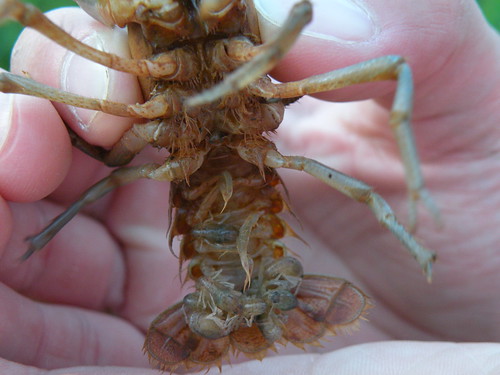


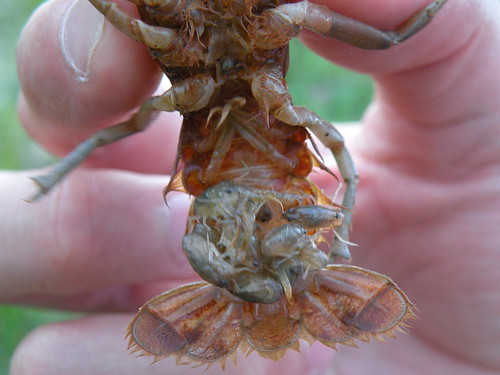
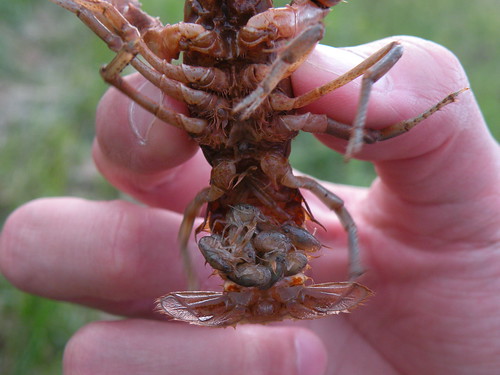



Burrowing crayfish September 10, 2009, on wet surface near flow area through Pinnacle Foods Inc. wet prairie west side of World Peace Wetland Prairie in Fayetteville, Arkansas, held by Robert Jackson for Aubrey James Shepherd photo. Crayfish is a female with several young clinging to her underside. Released unharmed after a couple of minutes of gentle handling.







Thursday, September 10, 2009
If you didn't attend Tuesday's agenda-setting session for the upcoming Tuesday's City Council meeting, this note won't be sufficient explanation
I finally got to watch video of Tuesday's agenda session this afternoon, and understood the confusion expressed by Jeremy Pate over the petition that representatives of the Town Branch Neighborhood submitted to the city clerk's office more than a month ago, before we received our officially sanctioned property map of the Town Branch Neighborhood and the official petition with landowner names that was prepared by the planning division about a month ago.
We have barely begun to circulate that official petition, although its existence is a result of the threat of the Washington County Livestock Auction property being rezoned to Downtown General.
The petition we submitted for the council's attention before the September 15 discussion of the proposed rezoning should be interpreted as an opinion poll. We did not set limits on who could sign it and the majority of signatures may be from people outside the affected neighborhood. Many signed because they work and shop in the neighborhood or own businesses in the neighborhood.
And many signed because they are veterans and recognize that the rezoning could allow inappropriate projects next to the National Cemetery and the Oak Cemetery (also dating back to 1867) but all signed because they recognized the inappropriateness of rezoning that parcel for any such purpose. We did NOT take it to every residence in the Town Branch Neighborhood for consideration because we will need the time and energy that could have been spent to circulate the official petition dealing specifically with neighborhood rezoning to neighborhood conservation.
The neighborhood will be submitting the official petition to rezone to neighborhood conservation for presentation through proper channels as soon as we have contacted every property owner and offered each one the opportunity to participate in the process.
Had public comment been the normal procedure during agenda sessions, I would have explained the difference in the two petitions.
No doubt, some property owners will not agree to sign the official petition. But I encountered almost no one unwilling to sign the early petition. We provided it in order to make it clear that a poll of people aware of the situation would reveal the overwhelming unpopularity of allowing multi-story buildings adjacent to the National Cemetery or the predominantly single-family neighborhood.
I apologize for not providing an explanatory note with the petition pages.
Thank you for your patient attention to this subject.
Sincerely,
Aubrey James Shepherd
P.O. Box 3159
Fayetteville, Arkansas 72702
aubreyshepherd@hotmail.com
479-444-6072
Aubrey Shepherd Central: www.aubunique.com
Aubrey's photos at flickr.com
Aubrey's Main Blog
We have barely begun to circulate that official petition, although its existence is a result of the threat of the Washington County Livestock Auction property being rezoned to Downtown General.
The petition we submitted for the council's attention before the September 15 discussion of the proposed rezoning should be interpreted as an opinion poll. We did not set limits on who could sign it and the majority of signatures may be from people outside the affected neighborhood. Many signed because they work and shop in the neighborhood or own businesses in the neighborhood.
And many signed because they are veterans and recognize that the rezoning could allow inappropriate projects next to the National Cemetery and the Oak Cemetery (also dating back to 1867) but all signed because they recognized the inappropriateness of rezoning that parcel for any such purpose. We did NOT take it to every residence in the Town Branch Neighborhood for consideration because we will need the time and energy that could have been spent to circulate the official petition dealing specifically with neighborhood rezoning to neighborhood conservation.
The neighborhood will be submitting the official petition to rezone to neighborhood conservation for presentation through proper channels as soon as we have contacted every property owner and offered each one the opportunity to participate in the process.
Had public comment been the normal procedure during agenda sessions, I would have explained the difference in the two petitions.
No doubt, some property owners will not agree to sign the official petition. But I encountered almost no one unwilling to sign the early petition. We provided it in order to make it clear that a poll of people aware of the situation would reveal the overwhelming unpopularity of allowing multi-story buildings adjacent to the National Cemetery or the predominantly single-family neighborhood.
I apologize for not providing an explanatory note with the petition pages.
Thank you for your patient attention to this subject.
Sincerely,
Aubrey James Shepherd
P.O. Box 3159
Fayetteville, Arkansas 72702
aubreyshepherd@hotmail.com
479-444-6072
Aubrey Shepherd Central: www.aubunique.com
Aubrey's photos at flickr.com
Aubrey's Main Blog
Enjoy a native buttonbush, members of the Quorum Court, this flower is for your wise decision on the limestone quarry issue
Please click on image to ENLARGE view of buttonbush on Pinnacle Foods Inc. wet prairie in the Town Branch neighborhood of south Fayetteville, Arkansas, on September 9, 2009.

The buttonbush is one of hundreds of native species that grow on the surface wetland above karst faults in northwest Arkansas.
Quarrying limestone in a karst area is inappropriate for many reasons.

The buttonbush is one of hundreds of native species that grow on the surface wetland above karst faults in northwest Arkansas.
Quarrying limestone in a karst area is inappropriate for many reasons.
Congratulations to the Washington County Quorum Court for voting down the permit for a limestone quarry
I was busy last night and didn't watch the Quorum Court meeting live on Government Channel, City 16 on Cox Cable, until it was rerun this morning. I tuned in and got to hear maybe the last half of the comments. It was awe-inspiring!
I knew the meeting would run long and didn't bother to look for a story about it in either newspaper. Back during the newspaper war in the 1980s-early 90s in Little Rock when the final press run for the city edition didn't begin until 1:30 a.m., the story would have been published. And there was always the "chaser," when the press was stopped as soon as printing plates with the latest version of the story was ready to hang on the press. That allowed some portion of people who got the city edition to read the story even if the meeting didn't end until after the press deadline.
That will never happen in this market. But breaking news on the Internet is an obvious way for many people to get the news. Too bad radio stations and TV stations are mostly just automated parroting of prepared programming through the night.
They certainly COULD put the news out in a timely manner if they chose to have an all-night reporter and technician on duty.
I don't know of any bloggers who got the word out immediately after the meeting. But I am sure that email and phone calls spread the word among those most concerned about it!
I knew the meeting would run long and didn't bother to look for a story about it in either newspaper. Back during the newspaper war in the 1980s-early 90s in Little Rock when the final press run for the city edition didn't begin until 1:30 a.m., the story would have been published. And there was always the "chaser," when the press was stopped as soon as printing plates with the latest version of the story was ready to hang on the press. That allowed some portion of people who got the city edition to read the story even if the meeting didn't end until after the press deadline.
That will never happen in this market. But breaking news on the Internet is an obvious way for many people to get the news. Too bad radio stations and TV stations are mostly just automated parroting of prepared programming through the night.
They certainly COULD put the news out in a timely manner if they chose to have an all-night reporter and technician on duty.
I don't know of any bloggers who got the word out immediately after the meeting. But I am sure that email and phone calls spread the word among those most concerned about it!
Wednesday, September 9, 2009
Webcast on Clean Water Act quality standards FREE by registration
Still Time to Register!
To register, visit http://www.epa.gov/watershedwebcasts
Free September Watershed Academy Webcast -- Second in Clean Water Act Series
Join us on Thursday, September 10th at 1-3pm Eastern for an "Introduction to Water Quality Standards," a second in series of Webcasts on the Clean Water Act (CWA). The CWA is the cornerstone of surface water quality protection in the United States and it sets broad goals for restoring and maintaining the chemical, physical, and biological integrity of the nation's water. Water quality standards (WQS) are aimed at translating the broad goals of the CWA into waterbody-specific objectives.
Tune into this Webcast to learn about WQS, which are the foundation of the water quality-based pollution control program mandated by the CWA.The Webcast will highlight the three major components of state and tribal water quality standards e.g., designated uses, water quality criteria, antidegradation, and will include a case study of how one state is working to strengthen its WQS program. Future Webcasts will highlight other aspects of the CWA including monitoring and assessment, total maximum daily loads, programs for managing point sources and nonpoint sources, and wetland protection.
Speakers:
Dr. Thomas Gardner, Environmental Scientist, U.S. EPA's National Water Quality Standards Branch; Heather Goss, Physical Scientist, U.S.EPA's National Water Quality Standards Branch; and William (Bill) Cole, Research Scientist, Minnesota Pollution Control Agency, Water Quality
Standards Unit
To register, visit http://www.epa.gov/watershedwebcasts.
To register, visit http://www.epa.gov/watershedwebcasts
Free September Watershed Academy Webcast -- Second in Clean Water Act Series
Join us on Thursday, September 10th at 1-3pm Eastern for an "Introduction to Water Quality Standards," a second in series of Webcasts on the Clean Water Act (CWA). The CWA is the cornerstone of surface water quality protection in the United States and it sets broad goals for restoring and maintaining the chemical, physical, and biological integrity of the nation's water. Water quality standards (WQS) are aimed at translating the broad goals of the CWA into waterbody-specific objectives.
Tune into this Webcast to learn about WQS, which are the foundation of the water quality-based pollution control program mandated by the CWA.The Webcast will highlight the three major components of state and tribal water quality standards e.g., designated uses, water quality criteria, antidegradation, and will include a case study of how one state is working to strengthen its WQS program. Future Webcasts will highlight other aspects of the CWA including monitoring and assessment, total maximum daily loads, programs for managing point sources and nonpoint sources, and wetland protection.
Speakers:
Dr. Thomas Gardner, Environmental Scientist, U.S. EPA's National Water Quality Standards Branch; Heather Goss, Physical Scientist, U.S.EPA's National Water Quality Standards Branch; and William (Bill) Cole, Research Scientist, Minnesota Pollution Control Agency, Water Quality
Standards Unit
To register, visit http://www.epa.gov/watershedwebcasts.
How much more silt will move downstream toward Beaver Lake during today's rain?
Please click on image to move to Flickr site and use magnifying tool to ENLARGE yesterday's view west from the new trail on Pinnacle Prairie.
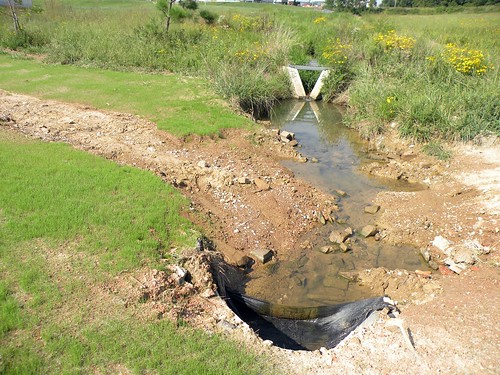
Will today's rain be heavy enough to match what we saw on August 5?
Please click on August 5, 2009, image to ENLARGE view (after a severe thunderstorm passed through south Fayetteville) of clear water running off Pinnacle Prairie with red-dirt runoff from right and left along the new trail being constructed. The water is being sucked into a culvert and allowed to flow through Soup Branch to South Duncan Avenue and on through Stanley Sullins' yard and into the Town Branch of the West Fork of the White River. Meanwhile, a greater amount of water is being allowed to flow down the portion of the trail that opens at 12th Street, allowing muddy flow down the street and into the same stream from a grassy swale on Duncan.

Please click on the image to ENLARGE view west from new trail through Pinnacle Prairie on August 7, 2009. Two days after the rain ended, the flow is falling back to normal. Seep springs near the Pinnacle Foods Inc. buildings and near the railroad keep a minimum flow in the Soup Branch except in the very driest times. When storms hit after extended dry spell, the runoff is limited because the tall grass and native forbs slow the flow enough to allow water to soak into the rich, black prairie soil. This process insures that runoff is clean and harmless and decreases the threat of flooding downstream.


Will today's rain be heavy enough to match what we saw on August 5?
Please click on August 5, 2009, image to ENLARGE view (after a severe thunderstorm passed through south Fayetteville) of clear water running off Pinnacle Prairie with red-dirt runoff from right and left along the new trail being constructed. The water is being sucked into a culvert and allowed to flow through Soup Branch to South Duncan Avenue and on through Stanley Sullins' yard and into the Town Branch of the West Fork of the White River. Meanwhile, a greater amount of water is being allowed to flow down the portion of the trail that opens at 12th Street, allowing muddy flow down the street and into the same stream from a grassy swale on Duncan.

Please click on the image to ENLARGE view west from new trail through Pinnacle Prairie on August 7, 2009. Two days after the rain ended, the flow is falling back to normal. Seep springs near the Pinnacle Foods Inc. buildings and near the railroad keep a minimum flow in the Soup Branch except in the very driest times. When storms hit after extended dry spell, the runoff is limited because the tall grass and native forbs slow the flow enough to allow water to soak into the rich, black prairie soil. This process insures that runoff is clean and harmless and decreases the threat of flooding downstream.

Mother Nature keeps sending rain to wash away unnatural soil and ill-begotten seed and stickum being spread by poorly trained, unsupervised workers
Tuesday, September 8, 2009
Mid-Riffs: New blog lays high-school millage issue facts on the line
Mid-Riffs
a view from mid-America
Better use this link and bookmark it (make it a favorite site). It starts out strong and will be another go-to-daily site for people interested in clear, direct, fact-based opinion writing. We'll see if it ever rises to the level of Jonah's The Iconoclast or Lessie's The Fayettevillage Voice. The key will be persevering and staying consistent unless a change of opinion is warranted by facts!
http://mid-riffs.com
Castles Made of Sand
Posted by JMcGee | Arkansas, Education | September 08, 2009 | 4 Comments
Administrators decide the new high school will be constructed from sand. One school board member is quoted as saying, “Sand provides maximum flexibility. The students can create a new learning environment each day. And it’s green!”
The date of the much ballyhooed millage election is swiftly approaching. Next Tuesday, Sep. 15th, the citizens of Fayetteville will decide whether or not to provide the school district with a $115.825 million line of credit. The district plans to use this tidy sum to replace the current high school with a brand new “21st Century” campus. And why, one might ask, is it necessary to replace the current facilities? I can think of four reasons new construction might be necessary:
The buildings are falling apart
New facilities will improve student outcomes (i.e. the current facility is inadequate for 21st century learning)
The current facility is too small
New facilities will expand the tax base and enrich our community
First, I would like to dispense with the notion that the current facilities are dilapidated and deteriorating to the point that learning is inhibited. Back around the time when the district was looking to sell the high school campus to the U of A, an assessment of the current structures was conducted. The resulting report stated plainly that the buildings were in excellent condition. In fact, the U of A facilities department estimated they would only need to spend $11 million to make the campus usable at the university level. The propaganda supporting the millage often highlights the age of the main building. Take this quote from the A Stronger Fayetteville website, “The current Fayetteville High School was built during the Korean War…” Let’s be clear, while the high school is half a century old, the current facilities have gone through several renovations in those years (the latest was finished in 1993), and they are in good shape. There is a big difference between adequacy and wanting all the bells and whistles. If the voters decide that they would like to pay for all the bells and whistles, that’s fine; but it is dishonest to insinuate that the building is falling apart to get what you want.
Second, is it true that new buildings facilitate better teaching, collaboration, and general 21st century-ness such that student outcomes improve? It could be the case that rearranging the learning space really will pay dividends, but we do not have to blindly trust that it will. We can look at evidence from around the United States on the link between facilities and student achievement. In the Handbook of the Economics of Education, Eric Hanushek provides a review of the research on school resources. Professor Hanusheck identifies 91 studies which look specifically at the link between facilities and student achievement in the U.S. (see table on pg. 889). He reports that 86 of them find no statistically significant relationship. And in the remaining 14% of analyses, there was hardly a consensus: 9% were positive and 5% were negative. The punchline is that most of the high quality research studies which have explored this issue have found no relationship between school facilities and student performance. This is in no way a surprising result. Buildings don’t teach kids, people do.
A third reason a district may need to construct new buildings is if the current facilities are simply too small. The district brought this issue to a head by successfully lobbying the school board to add the 9th grade to the high school campus. This will increase the student population from about 1,800 to somewhere between 2,400-2,500 students. The high school’s student common areas and entertainment/extra curricular facilities have been undersized for some time, and it is time we did something about it. But building a top-notch performing arts center and student common areas does not necessitate demolishing all of the current structures and starting anew. Space concerns could be alleviated through a more modest construction plan which makes use of the investments the citizens of Fayetteville have made over the past 50 years. As a side note, it seems to me that trashing perfectly good buildings is about the least green thing we could do as a city.
The last argument that can be made in favor building new high school facilities is one based in economics. The argument goes something like this – If we build a new high school with all of the newest amenities, more people of means and businesses will be attracted to settle in our fair city. The resulting influx of businesses and people will expand the tax base and act as an economic engine for the city. This was the case that was made last week at the economic impact panel discussion. The only problem with this argument is that it leaves out one crucial detail: Tax rates will have to increase to pay for the new high school. And an increase in the tax rate will discourage both people and businesses from locating in Fayetteville. For the economic engine argument to hold true the positive effect of the new high school would have to outweigh the negative effect of the increase in the tax rate. A look at the whole picture reveals that Fayetteville already has relatively high tax rates when compared to other cities in the area (take a look at millage rates, assessed real estate values, and estimated tax to confirm this for yourself) and the high school is consistently ranked as one of the best in the nation. These two facts lead me to believe that any gains made by improving an already very good school will be severely diminished by an increase in the tax rate.
I am by no means against spending money on facilities. I just want us to be thoughtful and honest about our reasons for investing in brick and mortar when it is clearly secondary to what goes on in the classroom.
Comments (4)
Cheri Said On 08-09-2009
Thoughtful and intelligent assessment. Thank you.
JAE Said On 08-09-2009
Regarding the new FHS, it would serve the district well to focus less on economic development and more on student performance.
Why has the information linked below been kept from the public?
http://pages.sbcglobal.net/jerf/fps/Current_Reality.PDF
Shortcuts: Mid-Riffs, Refunds And The 50 States :: Fayetteville Flyer Said On 08-09-2009
[...] A view from mid-America A new season, a new school year and a new local(ish) website. According to the inaugural post on Mid-Riffs.com, the new site “will offer everything from serious news and public policy critiques to not-so-serious commentary about life in the region.” Make sure and read their post on the new Fayetteville High School. [...]
Dave Said On 08-09-2009
I have two kids in the Fayetteville School System right now and I plan to vote NO on this issue. Why? Because I went to school in buildings that were MUCH worse than the current Fayetteville facilities and still received a top notch education because the teachers were top notch. The line that says “Buildings don’t teach kids, people do” is right on the money. I am taxed to death already in this city, and had the school board brought forth a plan that called for a smaller millage and building the new campus in phases over a few years I might have been for it.
This is politics and pork at work.
a view from mid-America
Better use this link and bookmark it (make it a favorite site). It starts out strong and will be another go-to-daily site for people interested in clear, direct, fact-based opinion writing. We'll see if it ever rises to the level of Jonah's The Iconoclast or Lessie's The Fayettevillage Voice. The key will be persevering and staying consistent unless a change of opinion is warranted by facts!
http://mid-riffs.com
Castles Made of Sand
Posted by JMcGee | Arkansas, Education | September 08, 2009 | 4 Comments
Administrators decide the new high school will be constructed from sand. One school board member is quoted as saying, “Sand provides maximum flexibility. The students can create a new learning environment each day. And it’s green!”
The date of the much ballyhooed millage election is swiftly approaching. Next Tuesday, Sep. 15th, the citizens of Fayetteville will decide whether or not to provide the school district with a $115.825 million line of credit. The district plans to use this tidy sum to replace the current high school with a brand new “21st Century” campus. And why, one might ask, is it necessary to replace the current facilities? I can think of four reasons new construction might be necessary:
The buildings are falling apart
New facilities will improve student outcomes (i.e. the current facility is inadequate for 21st century learning)
The current facility is too small
New facilities will expand the tax base and enrich our community
First, I would like to dispense with the notion that the current facilities are dilapidated and deteriorating to the point that learning is inhibited. Back around the time when the district was looking to sell the high school campus to the U of A, an assessment of the current structures was conducted. The resulting report stated plainly that the buildings were in excellent condition. In fact, the U of A facilities department estimated they would only need to spend $11 million to make the campus usable at the university level. The propaganda supporting the millage often highlights the age of the main building. Take this quote from the A Stronger Fayetteville website, “The current Fayetteville High School was built during the Korean War…” Let’s be clear, while the high school is half a century old, the current facilities have gone through several renovations in those years (the latest was finished in 1993), and they are in good shape. There is a big difference between adequacy and wanting all the bells and whistles. If the voters decide that they would like to pay for all the bells and whistles, that’s fine; but it is dishonest to insinuate that the building is falling apart to get what you want.
Second, is it true that new buildings facilitate better teaching, collaboration, and general 21st century-ness such that student outcomes improve? It could be the case that rearranging the learning space really will pay dividends, but we do not have to blindly trust that it will. We can look at evidence from around the United States on the link between facilities and student achievement. In the Handbook of the Economics of Education, Eric Hanushek provides a review of the research on school resources. Professor Hanusheck identifies 91 studies which look specifically at the link between facilities and student achievement in the U.S. (see table on pg. 889). He reports that 86 of them find no statistically significant relationship. And in the remaining 14% of analyses, there was hardly a consensus: 9% were positive and 5% were negative. The punchline is that most of the high quality research studies which have explored this issue have found no relationship between school facilities and student performance. This is in no way a surprising result. Buildings don’t teach kids, people do.
A third reason a district may need to construct new buildings is if the current facilities are simply too small. The district brought this issue to a head by successfully lobbying the school board to add the 9th grade to the high school campus. This will increase the student population from about 1,800 to somewhere between 2,400-2,500 students. The high school’s student common areas and entertainment/extra curricular facilities have been undersized for some time, and it is time we did something about it. But building a top-notch performing arts center and student common areas does not necessitate demolishing all of the current structures and starting anew. Space concerns could be alleviated through a more modest construction plan which makes use of the investments the citizens of Fayetteville have made over the past 50 years. As a side note, it seems to me that trashing perfectly good buildings is about the least green thing we could do as a city.
The last argument that can be made in favor building new high school facilities is one based in economics. The argument goes something like this – If we build a new high school with all of the newest amenities, more people of means and businesses will be attracted to settle in our fair city. The resulting influx of businesses and people will expand the tax base and act as an economic engine for the city. This was the case that was made last week at the economic impact panel discussion. The only problem with this argument is that it leaves out one crucial detail: Tax rates will have to increase to pay for the new high school. And an increase in the tax rate will discourage both people and businesses from locating in Fayetteville. For the economic engine argument to hold true the positive effect of the new high school would have to outweigh the negative effect of the increase in the tax rate. A look at the whole picture reveals that Fayetteville already has relatively high tax rates when compared to other cities in the area (take a look at millage rates, assessed real estate values, and estimated tax to confirm this for yourself) and the high school is consistently ranked as one of the best in the nation. These two facts lead me to believe that any gains made by improving an already very good school will be severely diminished by an increase in the tax rate.
I am by no means against spending money on facilities. I just want us to be thoughtful and honest about our reasons for investing in brick and mortar when it is clearly secondary to what goes on in the classroom.
Comments (4)
Cheri Said On 08-09-2009
Thoughtful and intelligent assessment. Thank you.
JAE Said On 08-09-2009
Regarding the new FHS, it would serve the district well to focus less on economic development and more on student performance.
Why has the information linked below been kept from the public?
http://pages.sbcglobal.net/jerf/fps/Current_Reality.PDF
Shortcuts: Mid-Riffs, Refunds And The 50 States :: Fayetteville Flyer Said On 08-09-2009
[...] A view from mid-America A new season, a new school year and a new local(ish) website. According to the inaugural post on Mid-Riffs.com, the new site “will offer everything from serious news and public policy critiques to not-so-serious commentary about life in the region.” Make sure and read their post on the new Fayetteville High School. [...]
Dave Said On 08-09-2009
I have two kids in the Fayetteville School System right now and I plan to vote NO on this issue. Why? Because I went to school in buildings that were MUCH worse than the current Fayetteville facilities and still received a top notch education because the teachers were top notch. The line that says “Buildings don’t teach kids, people do” is right on the money. I am taxed to death already in this city, and had the school board brought forth a plan that called for a smaller millage and building the new campus in phases over a few years I might have been for it.
This is politics and pork at work.
John Gray a uniquely serious candidate for U.S. Senator
Monday, September 7, 2009
John Gray announces campaign for U.S. Senator
The Morning News
Gray To Challenge Lincoln For Senate Seat
Please go to
http://www.flickr.com/photos/7295307@N02/sets/72157622287676500
for brief clips of John Gray talking about his reasons to run for the Senate on Saturday Sunday September 26, 2009.
By Dan Craft
THE MORNING NEWS
WEST FORK — Don Quixote lives in Greenland, and the windmill he's tilting at is the U.S. Senate.
John Gray announced Monday he'll seek the Green Party nomination to challenge Sen. Blanche Lincoln, D-Ark.
"Do I think I can really win? Not against $5 million. That's just realism talking," Gray said. "What this really is is a bully pulpit to get some ideas out there. I know I'm the guy sitting on the horse with a pot on his head, but it's important that we start talking about some of these issues that aren't really out there right now."
Gray, 66, worked with the Atomic Energy Commission before becoming an anti-nuclear activist. He also spent more than a decade in quality control with several auto manufacturers, helping set up plants in Mexico. Now, he wants the United States to withdraw from the World Trade Organization and the North American Free Trade Agreement, and bring jobs back to the U.S.
Bringing back jobs and reining in corporate excesses are Gray's main two issues. He proposes changing the 14th Amendment to the U.S. Constitution to limit some of the corporate protections.
"I feel this country is in more danger of failing right now than at maybe any other point in our history," Gray said. "I'd like to see personal rights apply only to 'natural' people, not the mega-corporations that have caused so much of this recent trouble."
His campaign slogan, "Resist Corporate Rule of America," is based on that principle, he said.
Gray joins a field that already has several announced Republican candidates and several possible others. Lincoln also faces a Democratic challenger in the primary race.
Winning is a long shot, acknowledged Gray, whose current office as mayor of Greenland is his only political experience.
Long shots, though, are something he learned about first-hand not long ago. Gray had to be airlifted to a hospital after a motorcycle wreck near Jasper sent him down a rock-filled ravine. After the experience, he's a fan of both second chances and helmet laws. "I feel like I've been given a reprieve," Gray said. "When I'm presented with an opportunity to make a difference these days, I have a hard time saying no."
PROFILE
John Gray
Age: 66
Birthplace: Morrilton
Residence: Greenland
Education: Bachelor's degrees in physics and math, University of Arkansas; master's degree in physics, University of Arkansas, 1968
Occupation: Semi-retired. Mayor of Greenland. Previous employment with the Atomic Energy Commission in physics research. Ford Motor Company and Chrysler Corp., parts quality control.
Family: Divorced. Two children, four grandchildren.
Source: Staff Report
Gray To Challenge Lincoln For Senate Seat
Please go to
http://www.flickr.com/photos/7295307@N02/sets/72157622287676500
for brief clips of John Gray talking about his reasons to run for the Senate on Saturday Sunday September 26, 2009.
By Dan Craft
THE MORNING NEWS
WEST FORK — Don Quixote lives in Greenland, and the windmill he's tilting at is the U.S. Senate.
John Gray announced Monday he'll seek the Green Party nomination to challenge Sen. Blanche Lincoln, D-Ark.
"Do I think I can really win? Not against $5 million. That's just realism talking," Gray said. "What this really is is a bully pulpit to get some ideas out there. I know I'm the guy sitting on the horse with a pot on his head, but it's important that we start talking about some of these issues that aren't really out there right now."
Gray, 66, worked with the Atomic Energy Commission before becoming an anti-nuclear activist. He also spent more than a decade in quality control with several auto manufacturers, helping set up plants in Mexico. Now, he wants the United States to withdraw from the World Trade Organization and the North American Free Trade Agreement, and bring jobs back to the U.S.
Bringing back jobs and reining in corporate excesses are Gray's main two issues. He proposes changing the 14th Amendment to the U.S. Constitution to limit some of the corporate protections.
"I feel this country is in more danger of failing right now than at maybe any other point in our history," Gray said. "I'd like to see personal rights apply only to 'natural' people, not the mega-corporations that have caused so much of this recent trouble."
His campaign slogan, "Resist Corporate Rule of America," is based on that principle, he said.
Gray joins a field that already has several announced Republican candidates and several possible others. Lincoln also faces a Democratic challenger in the primary race.
Winning is a long shot, acknowledged Gray, whose current office as mayor of Greenland is his only political experience.
Long shots, though, are something he learned about first-hand not long ago. Gray had to be airlifted to a hospital after a motorcycle wreck near Jasper sent him down a rock-filled ravine. After the experience, he's a fan of both second chances and helmet laws. "I feel like I've been given a reprieve," Gray said. "When I'm presented with an opportunity to make a difference these days, I have a hard time saying no."
PROFILE
John Gray
Age: 66
Birthplace: Morrilton
Residence: Greenland
Education: Bachelor's degrees in physics and math, University of Arkansas; master's degree in physics, University of Arkansas, 1968
Occupation: Semi-retired. Mayor of Greenland. Previous employment with the Atomic Energy Commission in physics research. Ford Motor Company and Chrysler Corp., parts quality control.
Family: Divorced. Two children, four grandchildren.
Source: Staff Report
Obama speech to children text available now and link to live broadcast available for use Tuesday
Prepared Remarks of President Barack Obama
Back to School Event
Arlington, Virginia
September 8, 2009
http://www.whitehouse.gov/live
The President: Hello everyone – how’s everybody doing today? I’m here with students at Wakefield High School in Arlington, Virginia. And we’ve got students tuning in from all across America, kindergarten through twelfth grade. I’m glad you all could join us today.
I know that for many of you, today is the first day of school. And for those of you in kindergarten, or starting middle or high school, it’s your first day in a new school, so it’s understandable if you’re a little nervous. I imagine there are some seniors out there who are feeling pretty good right now, with just one more year to go. And no matter what grade you’re in, some of you are probably wishing it were still summer, and you could’ve stayed in bed just a little longer this morning.
I know that feeling. When I was young, my family lived in Indonesia for a few years, and my mother didn’t have the money to send me where all the American kids went to school. So she decided to teach me extra lessons herself, Monday through Friday – at 4:30 in the morning.
Now I wasn’t too happy about getting up that early. A lot of times, I’d fall asleep right there at the kitchen table. But whenever I’d complain, my mother would just give me one of those looks and say, "This is no picnic for me either, buster."
So I know some of you are still adjusting to being back at school. But I’m here today because I have something important to discuss with you. I’m here because I want to talk with you about your education and what’s expected of all of you in this new school year.
Now I’ve given a lot of speeches about education. And I’ve talked a lot about responsibility.
I’ve talked about your teachers’ responsibility for inspiring you, and pushing you to learn.
I’ve talked about your parents’ responsibility for making sure you stay on track, and get your homework done, and don’t spend every waking hour in front of the TV or with that Xbox.
I’ve talked a lot about your government’s responsibility for setting high standards, supporting teachers and principals, and turning around schools that aren’t working where students aren’t getting the opportunities they deserve.
But at the end of the day, we can have the most dedicated teachers, the most supportive parents, and the best schools in the world – and none of it will matter unless all of you fulfill your responsibilities. Unless you show up to those schools; pay attention to those teachers; listen to your parents, grandparents and other adults; and put in the hard work it takes to succeed.
And that’s what I want to focus on today: the responsibility each of you has for your education. I want to start with the responsibility you have to yourself.
Every single one of you has something you’re good at. Every single one of you has something to offer. And you have a responsibility to yourself to discover what that is. That’s the opportunity an education can provide.
Maybe you could be a good writer – maybe even good enough to write a book or articles in a newspaper – but you might not know it until you write a paper for your English class. Maybe you could be an innovator or an inventor – maybe even good enough to come up with the next iPhone or a new medicine or vaccine – but you might not know it until you do a project for your science class. Maybe you could be a mayor or a Senator or a Supreme Court Justice, but you might not know that until you join student government or the debate team.
And no matter what you want to do with your life – I guarantee that you’ll need an education to do it. You want to be a doctor, or a teacher, or a police officer? You want to be a nurse or an architect, a lawyer or a member of our military? You’re going to need a good education for every single one of those careers. You can’t drop out of school and just drop into a good job. You’ve got to work for it and train for it and learn for it.
And this isn’t just important for your own life and your own future. What you make of your education will decide nothing less than the future of this country. What you’re learning in school today will determine whether we as a nation can meet our greatest challenges in the future.
You’ll need the knowledge and problem-solving skills you learn in science and math to cure diseases like cancer and AIDS, and to develop new energy technologies and protect our environment. You’ll need the insights and critical thinking skills you gain in history and social studies to fight poverty and homelessness, crime and discrimination, and make our nation more fair and more free. You’ll need the creativity and ingenuity you develop in all your classes to build new companies that will create new jobs and boost our economy.
We need every single one of you to develop your talents, skills and intellect so you can help solve our most difficult problems. If you don’t do that – if you quit on school – you’re not just quitting on yourself, you’re quitting on your country.
Now I know it’s not always easy to do well in school. I know a lot of you have challenges in your lives right now that can make it hard to focus on your schoolwork.
I get it. I know what that’s like. My father left my family when I was two years old, and I was raised by a single mother who struggled at times to pay the bills and wasn’t always able to give us things the other kids had. There were times when I missed having a father in my life. There were times when I was lonely and felt like I didn’t fit in.
So I wasn’t always as focused as I should have been. I did some things I’m not proud of, and got in more trouble than I should have. And my life could have easily taken a turn for the worse.
But I was fortunate. I got a lot of second chances and had the opportunity to go to college, and law school, and follow my dreams. My wife, our First Lady Michelle Obama, has a similar story. Neither of her parents had gone to college, and they didn’t have much. But they worked hard, and she worked hard, so that she could go to the best schools in this country.
Some of you might not have those advantages. Maybe you don’t have adults in your life who give you the support that you need. Maybe someone in your family has lost their job, and there’s not enough money to go around. Maybe you live in a neighborhood where you don’t feel safe, or have friends who are pressuring you to do things you know aren’t right.
But at the end of the day, the circumstances of your life – what you look like, where you come from, how much money you have, what you’ve got going on at home – that’s no excuse for neglecting your homework or having a bad attitude. That’s no excuse for talking back to your teacher, or cutting class, or dropping out of school. That’s no excuse for not trying.
Where you are right now doesn’t have to determine where you’ll end up. No one’s written your destiny for you. Here in America, you write your own destiny. You make your own future.
That’s what young people like you are doing every day, all across America.
Young people like Jazmin Perez, from Roma, Texas. Jazmin didn’t speak English when she first started school. Hardly anyone in her hometown went to college, and neither of her parents had gone either. But she worked hard, earned good grades, got a scholarship to Brown University, and is now in graduate school, studying public health, on her way to being Dr. Jazmin Perez.
I’m thinking about Andoni Schultz, from Los Altos, California, who’s fought brain cancer since he was three. He’s endured all sorts of treatments and surgeries, one of which affected his memory, so it took him much longer – hundreds of extra hours – to do his schoolwork. But he never fell behind, and he’s headed to college this fall.
And then there’s Shantell Steve, from my hometown of Chicago, Illinois. Even when bouncing from foster home to foster home in the toughest neighborhoods, she managed to get a job at a local health center; start a program to keep young people out of gangs; and she’s on track to graduate high school with honors and go on to college.
Jazmin, Andoni and Shantell aren’t any different from any of you. They faced challenges in their lives just like you do. But they refused to give up. They chose to take responsibility for their education and set goals for themselves. And I expect all of you to do the same.
That’s why today, I’m calling on each of you to set your own goals for your education – and to do everything you can to meet them. Your goal can be something as simple as doing all your homework, paying attention in class, or spending time each day reading a book. Maybe you’ll decide to get involved in an extracurricular activity, or volunteer in your community. Maybe you’ll decide to stand up for kids who are being teased or bullied because of who they are or how they look, because you believe, like I do, that all kids deserve a safe environment to study and learn. Maybe you’ll decide to take better care of yourself so you can be more ready to learn. And along those lines, I hope you’ll all wash your hands a lot, and stay home from school when you don’t feel well, so we can keep people from getting the flu this fall and winter.
Whatever you resolve to do, I want you to commit to it. I want you to really work at it.
I know that sometimes, you get the sense from TV that you can be rich and successful without any hard work -- that your ticket to success is through rapping or basketball or being a reality TV star, when chances are, you’re not going to be any of those things.
But the truth is, being successful is hard. You won’t love every subject you study. You won’t click with every teacher. Not every homework assignment will seem completely relevant to your life right this minute. And you won’t necessarily succeed at everything the first time you try.
That’s OK. Some of the most successful people in the world are the ones who’ve had the most failures. JK Rowling’s first Harry Potter book was rejected twelve times before it was finally published. Michael Jordan was cut from his high school basketball team, and he lost hundreds of games and missed thousands of shots during his career. But he once said, "I have failed over and over and over again in my life. And that is why I succeed."
These people succeeded because they understand that you can’t let your failures define you – you have to let them teach you. You have to let them show you what to do differently next time. If you get in trouble, that doesn’t mean you’re a troublemaker, it means you need to try harder to behave. If you get a bad grade, that doesn’t mean you’re stupid, it just means you need to spend more time studying.
No one’s born being good at things, you become good at things through hard work. You’re not a varsity athlete the first time you play a new sport. You don’t hit every note the first time you sing a song. You’ve got to practice. It’s the same with your schoolwork. You might have to do a math problem a few times before you get it right, or read something a few times before you understand it, or do a few drafts of a paper before it’s good enough to hand in.
Don’t be afraid to ask questions. Don’t be afraid to ask for help when you need it. I do that every day. Asking for help isn’t a sign of weakness, it’s a sign of strength. It shows you have the courage to admit when you don’t know something, and to learn something new. So find an adult you trust – a parent, grandparent or teacher; a coach or counselor – and ask them to help you stay on track to meet your goals.
And even when you’re struggling, even when you’re discouraged, and you feel like other people have given up on you – don’t ever give up on yourself. Because when you give up on yourself, you give up on your country.
The story of America isn’t about people who quit when things got tough. It’s about people who kept going, who tried harder, who loved their country too much to do anything less than their best.
It’s the story of students who sat where you sit 250 years ago, and went on to wage a revolution and found this nation. Students who sat where you sit 75 years ago who overcame a Depression and won a world war; who fought for civil rights and put a man on the moon. Students who sat where you sit 20 years ago who founded Google, Twitter and Facebook and changed the way we communicate with each other.
So today, I want to ask you, what’s your contribution going to be? What problems are you going to solve? What discoveries will you make? What will a president who comes here in twenty or fifty or one hundred years say about what all of you did for this country?
Your families, your teachers, and I are doing everything we can to make sure you have the education you need to answer these questions. I’m working hard to fix up your classrooms and get you the books, equipment and computers you need to learn. But you’ve got to do your part too. So I expect you to get serious this year. I expect you to put your best effort into everything you do. I expect great things from each of you. So don’t let us down – don’t let your family or your country or yourself down. Make us all proud. I know you can do it.
Thank you, God bless you, and God bless America.
Back to School Event
Arlington, Virginia
September 8, 2009
http://www.whitehouse.gov/live
The President: Hello everyone – how’s everybody doing today? I’m here with students at Wakefield High School in Arlington, Virginia. And we’ve got students tuning in from all across America, kindergarten through twelfth grade. I’m glad you all could join us today.
I know that for many of you, today is the first day of school. And for those of you in kindergarten, or starting middle or high school, it’s your first day in a new school, so it’s understandable if you’re a little nervous. I imagine there are some seniors out there who are feeling pretty good right now, with just one more year to go. And no matter what grade you’re in, some of you are probably wishing it were still summer, and you could’ve stayed in bed just a little longer this morning.
I know that feeling. When I was young, my family lived in Indonesia for a few years, and my mother didn’t have the money to send me where all the American kids went to school. So she decided to teach me extra lessons herself, Monday through Friday – at 4:30 in the morning.
Now I wasn’t too happy about getting up that early. A lot of times, I’d fall asleep right there at the kitchen table. But whenever I’d complain, my mother would just give me one of those looks and say, "This is no picnic for me either, buster."
So I know some of you are still adjusting to being back at school. But I’m here today because I have something important to discuss with you. I’m here because I want to talk with you about your education and what’s expected of all of you in this new school year.
Now I’ve given a lot of speeches about education. And I’ve talked a lot about responsibility.
I’ve talked about your teachers’ responsibility for inspiring you, and pushing you to learn.
I’ve talked about your parents’ responsibility for making sure you stay on track, and get your homework done, and don’t spend every waking hour in front of the TV or with that Xbox.
I’ve talked a lot about your government’s responsibility for setting high standards, supporting teachers and principals, and turning around schools that aren’t working where students aren’t getting the opportunities they deserve.
But at the end of the day, we can have the most dedicated teachers, the most supportive parents, and the best schools in the world – and none of it will matter unless all of you fulfill your responsibilities. Unless you show up to those schools; pay attention to those teachers; listen to your parents, grandparents and other adults; and put in the hard work it takes to succeed.
And that’s what I want to focus on today: the responsibility each of you has for your education. I want to start with the responsibility you have to yourself.
Every single one of you has something you’re good at. Every single one of you has something to offer. And you have a responsibility to yourself to discover what that is. That’s the opportunity an education can provide.
Maybe you could be a good writer – maybe even good enough to write a book or articles in a newspaper – but you might not know it until you write a paper for your English class. Maybe you could be an innovator or an inventor – maybe even good enough to come up with the next iPhone or a new medicine or vaccine – but you might not know it until you do a project for your science class. Maybe you could be a mayor or a Senator or a Supreme Court Justice, but you might not know that until you join student government or the debate team.
And no matter what you want to do with your life – I guarantee that you’ll need an education to do it. You want to be a doctor, or a teacher, or a police officer? You want to be a nurse or an architect, a lawyer or a member of our military? You’re going to need a good education for every single one of those careers. You can’t drop out of school and just drop into a good job. You’ve got to work for it and train for it and learn for it.
And this isn’t just important for your own life and your own future. What you make of your education will decide nothing less than the future of this country. What you’re learning in school today will determine whether we as a nation can meet our greatest challenges in the future.
You’ll need the knowledge and problem-solving skills you learn in science and math to cure diseases like cancer and AIDS, and to develop new energy technologies and protect our environment. You’ll need the insights and critical thinking skills you gain in history and social studies to fight poverty and homelessness, crime and discrimination, and make our nation more fair and more free. You’ll need the creativity and ingenuity you develop in all your classes to build new companies that will create new jobs and boost our economy.
We need every single one of you to develop your talents, skills and intellect so you can help solve our most difficult problems. If you don’t do that – if you quit on school – you’re not just quitting on yourself, you’re quitting on your country.
Now I know it’s not always easy to do well in school. I know a lot of you have challenges in your lives right now that can make it hard to focus on your schoolwork.
I get it. I know what that’s like. My father left my family when I was two years old, and I was raised by a single mother who struggled at times to pay the bills and wasn’t always able to give us things the other kids had. There were times when I missed having a father in my life. There were times when I was lonely and felt like I didn’t fit in.
So I wasn’t always as focused as I should have been. I did some things I’m not proud of, and got in more trouble than I should have. And my life could have easily taken a turn for the worse.
But I was fortunate. I got a lot of second chances and had the opportunity to go to college, and law school, and follow my dreams. My wife, our First Lady Michelle Obama, has a similar story. Neither of her parents had gone to college, and they didn’t have much. But they worked hard, and she worked hard, so that she could go to the best schools in this country.
Some of you might not have those advantages. Maybe you don’t have adults in your life who give you the support that you need. Maybe someone in your family has lost their job, and there’s not enough money to go around. Maybe you live in a neighborhood where you don’t feel safe, or have friends who are pressuring you to do things you know aren’t right.
But at the end of the day, the circumstances of your life – what you look like, where you come from, how much money you have, what you’ve got going on at home – that’s no excuse for neglecting your homework or having a bad attitude. That’s no excuse for talking back to your teacher, or cutting class, or dropping out of school. That’s no excuse for not trying.
Where you are right now doesn’t have to determine where you’ll end up. No one’s written your destiny for you. Here in America, you write your own destiny. You make your own future.
That’s what young people like you are doing every day, all across America.
Young people like Jazmin Perez, from Roma, Texas. Jazmin didn’t speak English when she first started school. Hardly anyone in her hometown went to college, and neither of her parents had gone either. But she worked hard, earned good grades, got a scholarship to Brown University, and is now in graduate school, studying public health, on her way to being Dr. Jazmin Perez.
I’m thinking about Andoni Schultz, from Los Altos, California, who’s fought brain cancer since he was three. He’s endured all sorts of treatments and surgeries, one of which affected his memory, so it took him much longer – hundreds of extra hours – to do his schoolwork. But he never fell behind, and he’s headed to college this fall.
And then there’s Shantell Steve, from my hometown of Chicago, Illinois. Even when bouncing from foster home to foster home in the toughest neighborhoods, she managed to get a job at a local health center; start a program to keep young people out of gangs; and she’s on track to graduate high school with honors and go on to college.
Jazmin, Andoni and Shantell aren’t any different from any of you. They faced challenges in their lives just like you do. But they refused to give up. They chose to take responsibility for their education and set goals for themselves. And I expect all of you to do the same.
That’s why today, I’m calling on each of you to set your own goals for your education – and to do everything you can to meet them. Your goal can be something as simple as doing all your homework, paying attention in class, or spending time each day reading a book. Maybe you’ll decide to get involved in an extracurricular activity, or volunteer in your community. Maybe you’ll decide to stand up for kids who are being teased or bullied because of who they are or how they look, because you believe, like I do, that all kids deserve a safe environment to study and learn. Maybe you’ll decide to take better care of yourself so you can be more ready to learn. And along those lines, I hope you’ll all wash your hands a lot, and stay home from school when you don’t feel well, so we can keep people from getting the flu this fall and winter.
Whatever you resolve to do, I want you to commit to it. I want you to really work at it.
I know that sometimes, you get the sense from TV that you can be rich and successful without any hard work -- that your ticket to success is through rapping or basketball or being a reality TV star, when chances are, you’re not going to be any of those things.
But the truth is, being successful is hard. You won’t love every subject you study. You won’t click with every teacher. Not every homework assignment will seem completely relevant to your life right this minute. And you won’t necessarily succeed at everything the first time you try.
That’s OK. Some of the most successful people in the world are the ones who’ve had the most failures. JK Rowling’s first Harry Potter book was rejected twelve times before it was finally published. Michael Jordan was cut from his high school basketball team, and he lost hundreds of games and missed thousands of shots during his career. But he once said, "I have failed over and over and over again in my life. And that is why I succeed."
These people succeeded because they understand that you can’t let your failures define you – you have to let them teach you. You have to let them show you what to do differently next time. If you get in trouble, that doesn’t mean you’re a troublemaker, it means you need to try harder to behave. If you get a bad grade, that doesn’t mean you’re stupid, it just means you need to spend more time studying.
No one’s born being good at things, you become good at things through hard work. You’re not a varsity athlete the first time you play a new sport. You don’t hit every note the first time you sing a song. You’ve got to practice. It’s the same with your schoolwork. You might have to do a math problem a few times before you get it right, or read something a few times before you understand it, or do a few drafts of a paper before it’s good enough to hand in.
Don’t be afraid to ask questions. Don’t be afraid to ask for help when you need it. I do that every day. Asking for help isn’t a sign of weakness, it’s a sign of strength. It shows you have the courage to admit when you don’t know something, and to learn something new. So find an adult you trust – a parent, grandparent or teacher; a coach or counselor – and ask them to help you stay on track to meet your goals.
And even when you’re struggling, even when you’re discouraged, and you feel like other people have given up on you – don’t ever give up on yourself. Because when you give up on yourself, you give up on your country.
The story of America isn’t about people who quit when things got tough. It’s about people who kept going, who tried harder, who loved their country too much to do anything less than their best.
It’s the story of students who sat where you sit 250 years ago, and went on to wage a revolution and found this nation. Students who sat where you sit 75 years ago who overcame a Depression and won a world war; who fought for civil rights and put a man on the moon. Students who sat where you sit 20 years ago who founded Google, Twitter and Facebook and changed the way we communicate with each other.
So today, I want to ask you, what’s your contribution going to be? What problems are you going to solve? What discoveries will you make? What will a president who comes here in twenty or fifty or one hundred years say about what all of you did for this country?
Your families, your teachers, and I are doing everything we can to make sure you have the education you need to answer these questions. I’m working hard to fix up your classrooms and get you the books, equipment and computers you need to learn. But you’ve got to do your part too. So I expect you to get serious this year. I expect you to put your best effort into everything you do. I expect great things from each of you. So don’t let us down – don’t let your family or your country or yourself down. Make us all proud. I know you can do it.
Thank you, God bless you, and God bless America.
Labor Day driving not quite in the holiday spirit
Please click on image to move to Flickr site and ENLARGE view of "accident" scene on Martin Luther King Jr. Boulevard in Fayetteville, Arkansas, on September 7, 2009.
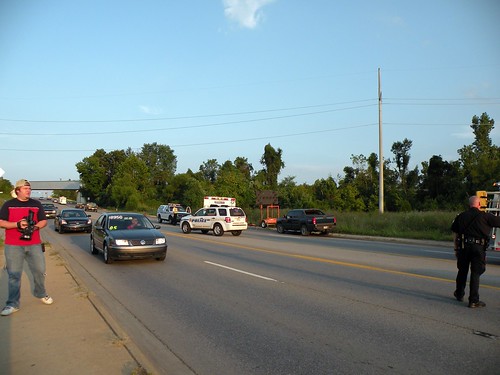
According to witnesses in a vehicle (black one on the curb near center of photo) a car passed them about 60 yards west (to the right) on MLK at high speed and pulled in front of them, crossing the right lane and jumping the curb, crossing the sidewalk, bursting through a fence and seeming to accelerate across the lot at right before crashing into the tree line. The driver had disappeared by the time the police, firefighters and ambulance attendants reached the scene.
The car ended up near where the Town Branch of the West Fork of the White River, flowing southeast from the athletic facility area of the UA campus flows under the railroad through more-than-century-old rock-lined tunnel. Police did not immediately capture the driver even though a vehicle with a sign saying "police dog" was on the scene. The good news was that no one was hurt, unless it was the speeding driver. A special benefit of this relatively harmless accident was that all the cars traveling north from Hill Place and entering MLK Jr. Boulevard from Royal Oak Drive (the northern exit from Hill Place student apartments while the many emergency vehicles were on the street to the west obeyed the right-turn-only sign and went east on MLK. The majority on other recent days turned left despite the sign and the design of the median that makes a left-turn difficult to execute.

According to witnesses in a vehicle (black one on the curb near center of photo) a car passed them about 60 yards west (to the right) on MLK at high speed and pulled in front of them, crossing the right lane and jumping the curb, crossing the sidewalk, bursting through a fence and seeming to accelerate across the lot at right before crashing into the tree line. The driver had disappeared by the time the police, firefighters and ambulance attendants reached the scene.
The car ended up near where the Town Branch of the West Fork of the White River, flowing southeast from the athletic facility area of the UA campus flows under the railroad through more-than-century-old rock-lined tunnel. Police did not immediately capture the driver even though a vehicle with a sign saying "police dog" was on the scene. The good news was that no one was hurt, unless it was the speeding driver. A special benefit of this relatively harmless accident was that all the cars traveling north from Hill Place and entering MLK Jr. Boulevard from Royal Oak Drive (the northern exit from Hill Place student apartments while the many emergency vehicles were on the street to the west obeyed the right-turn-only sign and went east on MLK. The majority on other recent days turned left despite the sign and the design of the median that makes a left-turn difficult to execute.
Sunday, September 6, 2009
Frank Robins of Conway, mentor to hundreds of journalists, dies at 80
Former Owner, Publisher of Log Cabin Democrat Dies
By The Associated Press - 8/31/2009 9:18:08 AM
Frank E. Robins III, the former publisher and last family owner of the Log Cabin Democrat newspaper in Arkansas, has died. He was 80.
Robins died Saturday at his Conway home, his former newspaper reported. The newspaper did not offer a cause of death and the funeral home handling his service declined to release any information.
Robins' grandfather, J.W. Robins, purchased the newspaper in a trade for his sawmill in 1894. The newspaper remained in the family's hands when a young Frank Robins III joined the newsroom in 1949 after graduating from Hendrix College in Conway.
Robins left Conway for a time to serve in the Air Force during the Korean War, earning the rank of second lieutenant. In 1959, he took over as publisher after the death of his father, Frank E. Robins Jr.
Former colleagues remembered Robins as a stickler for accuracy.
"He was very hard-nosed about assumptions," said John L. Ward, who also served as managing editor at the Log Cabin under Robins. "Reporters, in gathering information for a story, sometimes tended to make two or three assumptions so they could crank out one story and go on to something else. Frank hated assumptions. If you made an assumption and it was wrong, he was a hard man to deal with."
In 1989, Robins sold 49 percent of the newspaper to Stauffer Communications Inc. of Topeka, Kan. Robins continued to serve as publisher until his retirement in 1994. Stauffer was bought by Morris Communications Inc., based at Augusta, Ga., in 1995.
Robins served on the board of the Conway Corp., for many years as chairman of the agency that provides electricity, water and other services to the city. He also served as a former president of the Arkansas Press Association.
Robins is survived by his wife Dorothy O'Neal Robins, daughter Laura Robins Falls, sister Mary Virginia Ferguson and grandson Nathan Thomas Falls of Conway. A graveside service will be at 9:30 a.m. Tuesday at Crestlawn Memorial Park in Conway, followed by a 10:30 a.m. service at First United Methodist Church in Conway.
By The Associated Press - 8/31/2009 9:18:08 AM
Frank E. Robins III, the former publisher and last family owner of the Log Cabin Democrat newspaper in Arkansas, has died. He was 80.
Robins died Saturday at his Conway home, his former newspaper reported. The newspaper did not offer a cause of death and the funeral home handling his service declined to release any information.
Robins' grandfather, J.W. Robins, purchased the newspaper in a trade for his sawmill in 1894. The newspaper remained in the family's hands when a young Frank Robins III joined the newsroom in 1949 after graduating from Hendrix College in Conway.
Robins left Conway for a time to serve in the Air Force during the Korean War, earning the rank of second lieutenant. In 1959, he took over as publisher after the death of his father, Frank E. Robins Jr.
Former colleagues remembered Robins as a stickler for accuracy.
"He was very hard-nosed about assumptions," said John L. Ward, who also served as managing editor at the Log Cabin under Robins. "Reporters, in gathering information for a story, sometimes tended to make two or three assumptions so they could crank out one story and go on to something else. Frank hated assumptions. If you made an assumption and it was wrong, he was a hard man to deal with."
In 1989, Robins sold 49 percent of the newspaper to Stauffer Communications Inc. of Topeka, Kan. Robins continued to serve as publisher until his retirement in 1994. Stauffer was bought by Morris Communications Inc., based at Augusta, Ga., in 1995.
Robins served on the board of the Conway Corp., for many years as chairman of the agency that provides electricity, water and other services to the city. He also served as a former president of the Arkansas Press Association.
Robins is survived by his wife Dorothy O'Neal Robins, daughter Laura Robins Falls, sister Mary Virginia Ferguson and grandson Nathan Thomas Falls of Conway. A graveside service will be at 9:30 a.m. Tuesday at Crestlawn Memorial Park in Conway, followed by a 10:30 a.m. service at First United Methodist Church in Conway.
Saturday, September 5, 2009
Boom box on a truck ready to provide sound to the whole Town Branch neighborhood and the Fayetteville National Cemetery on Saturday, September 5, 2009
Please click on image to go to the Flickr site and ENLARGE view of radio station's moving boom box ready to liven up another "party hearty" event at the Hill Place student apartment swimming pool. Truck is parked on a portion of the city's Tsa-La-Gi Trail that parallels Martin Luther King Jr. Boulevard and the Trail of Tears. Some neighbors of the site were the ones crying during a similar party a couple of Saturdays earlier.
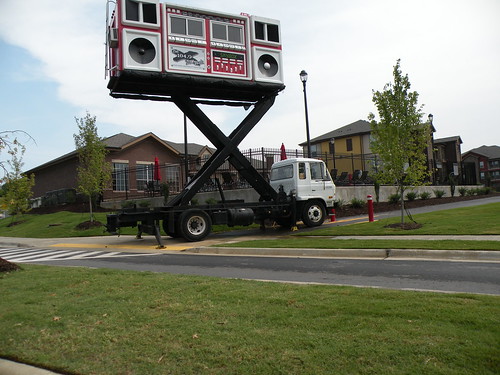

Friday, September 4, 2009
When Gannett bought the Arkansas Gazette in 1986, John Robert Starr, Managing Editor of the Arkansas Democrat, had much to say
Thursday, September 3, 2009
More seed and goop spraying on the unnatural "topsoil" spread along the new trail through Pinnacle Foods Inc. wet prairie
Please click on images to go to Flickr and enlarge photos to see detail of pictures of the landscaping workers spraying seed and sticky green material along the Pinnacle Prairie trail. These landscapers apparently have no idea about selection of soil or the importance of protecting such prairie land from invasive species or replacing the natural soil. Butr they do what they are told by someone who can speak their language. Maybe there is a problem with the city's manual for landscaping and the lack of training of city planners, trail administrators and such in dealing with the natural prairie land in Fayetteville, Arkansas?
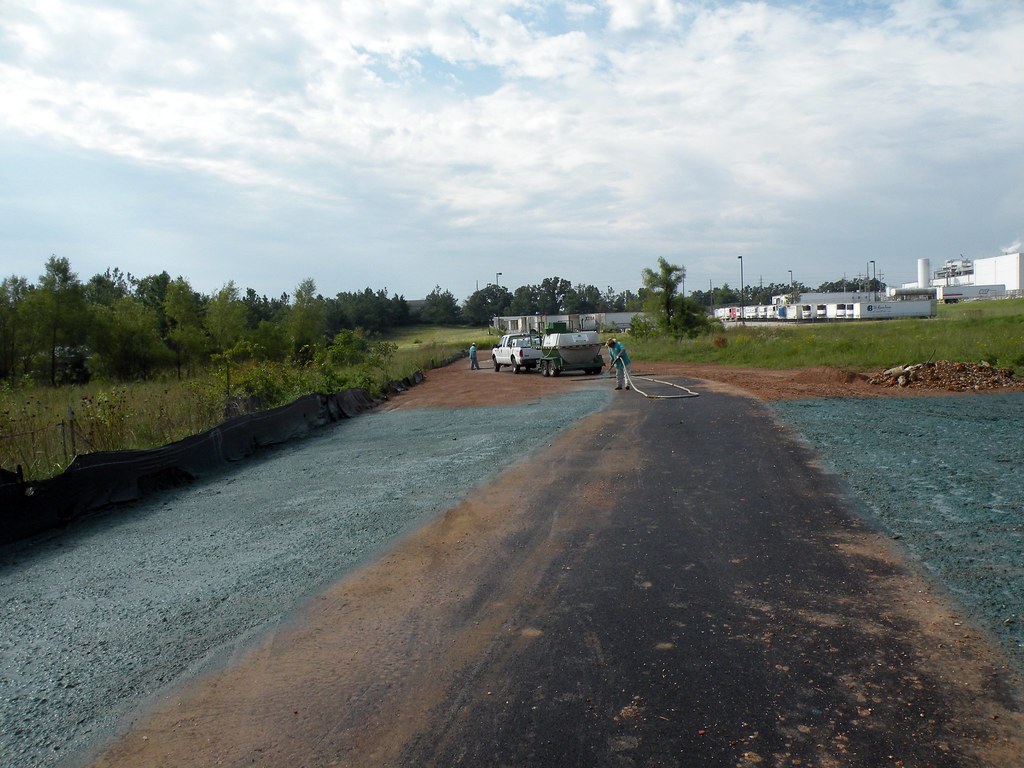

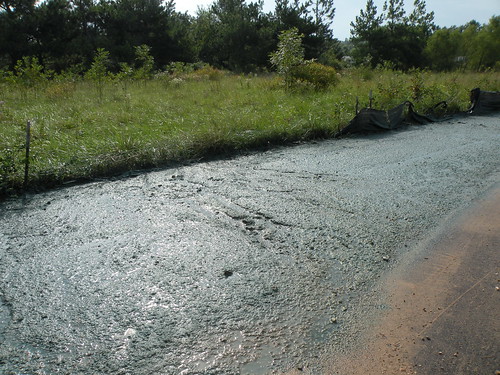
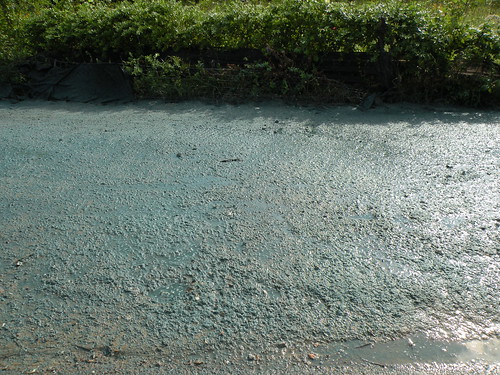






Subscribe to:
Posts (Atom)

